|
[Published by Taxmann Group of Publications in June 2019 Issue]
Introduction 1. The Insolvency & Bankruptcy Code, 2016 (IBC) has been in operation for more than 2 years now. It changed the scenario of debt recovery and the concept from "debtor-controlled company management" to the "creditors-controlled company management." This paradigm shift has been possible, inter alia, due to the positive interpretation of the provisions of the IBC by the Hon'ble Supreme Court of India and by the National Company Law Appellate Tribunal (NCLAT). This has made it possible to deal with many intricate legal issues which basically attempted to create roadblocks in the working of the IBC. In this article, an attempt has been made to highlight some of the excerpts of important/notable judgments of the Hon'ble Supreme Court of India, as also the judgments passed by the NCLAT on the interpretation of the provisions of the IBC. Role of National Company Law Tribunal (NCLT) to admit applications filed under section 7 or 9 of the IBC 2. As early as in 2017, the Hob'ble Supreme Court of India, in its judgment in the case of Mobilox Innovations (P.) Ltd. v. Kirusa Software (P.) Ltd. [2017] 85 taxmann.com 292/144 SCL 37 has observed that:- "Once the adjudicating authority/tribunal is satisfied as to the existence of the default and has ensured that the application is complete and no disciplinary proceedings are pending against the proposed resolution professional, it shall admit the application. The adjudicating authority/Tribunal is not required to look into any other criteria for admission of the application." In other words, an application under section 7 or section 9 of the IBC is acceptable so long as the debt is proved to be due and there has been an occurrence or existence of default. What is material is that the default is for at least Rs. 1 lakh. In view of section 4 of the IBC, the moment default is of Rs. 1 lakh or more, an application to trigger Corporate Insolvency Resolution Process (CIRP) under the IBC is maintainable. If the corporate debtor fails to show that there is no debt due or default in existence, he cannot avoid the provisions of the IBC. Also, while interpreting the provisions of the IBC, the Adjudicating Authorities (AA) (i.e., the NCLT) has taken a persistent view that in financial transactions, adjustments and compromises are to be left to the parties to settle the matter in their best interest or exigencies of the business. However, in the absence of any binding compromise agreement/debt restructuring approval, it is beyond the powers of the AA to extend time indefinitely or to defer the prayer of the applicant-financial creditor/operational creditor for admission of the application u/s 7 or 9 of the IBC, as the case may be. The respective AAs/NCLTs have also taken a persistent view that time is the essence of the Code and that a far strict time frame is expected to be followed by the AA at every stage of the proceedings. This strict line of enforcement of the provisions of the IBC has prompted many of the debtor companies to approach the financial creditor/operational creditor to work out a settlement and/or compromise so as to avoid being dragged to the NCLT under the provisions of the IBC. Such attempts are made not only prior to filing of the application under IBC, but even while the application is pending adjudication or even after the stage of admission of such application - to settle the matter to come out of rigour of the provisions of IBC which render the erstwhile Board of Directors of the debtor-company powerless as the management of the company goes out of their hands. Filing of Resolution Plan - How defaulters/related persons are prevented from bidding - Supreme Court's judgment interpreting section 29A of the IBC 3. Broadly speaking, once the debtor-company goes out of the hands of the erstwhile defaulting promoters/management and the working of the company is managed by the Committee of Creditors (CoC) with the help of the appointed Resolution Professional (RP), in order to complete the CIRP within the stipulated maximum 180 days (extendable by another 90 days), bids are invited from interested parties to submit their Resolution Plans for the revival/rehabilitation of the debtor-company and stricter norms are adopted to evaluate such bids. The provisions of section 29A of the IBC have been enacted so as to prevent the defaulter directors/promoters/related persons from bidding for the same company and section 29A does not even allow them to have backdoor entry via the clever device of bidding through entities projecting as 'Resolution Applicant'. One such interesting and important case relates to the debt ridden company, Essar Steel and how the matter reached the Hon'ble Supreme Court. The Hon'ble Supreme Court of India in its judgment dated 4th October, 2018, in the case of Arcelor Mittal (P.) Ltd. v. Satish Kumar Gupta [2018] 98 taxmann.com 99/150 SCL 354 (hereinafter, "Arcelor Mittal") dealt not only with the important issue regarding eligibility criteria of the resolution applicant under Section 29A of the IBC for bidding in the resolution plan of the debt-ridden company, but the said judgment also dealt with other important issues relating to interpretation of some of the provisions of the IBC. It needs to be highlighted here that in order to prevent the erstwhile promoters of the debtor-company and the persons acting in concert with them, from bidding in the resolution application process, section 29A was introduced in the IBC, whereby many disqualifications were inserted to disentitle the resolution applicants to be persons connected with the promoters of the debtor-company. In the aforementioned Supreme Court's Arcelor Mittal (P.) Ltd. case (supra), the provision of section 29A of the IBC which came up for interpretation was the opening line of section 29A which read as below: "A person shall not be eligible to submit a resolution plan, if such person, or any other person, acting jointly or in concert with such person…" (followed by the instances laid down in the various sub-clauses mentioned under section 29A). The Hon'ble Supreme Court of India, in its aforesaid Arcelor Mittal (P.) Ltd.'s case (supra) judgment, while interpreting section 29A of the IBC held that: "The opening lines of section 29A of the Amendment Act refer to a de facto as opposed to a de jure position of the persons mentioned therein. This is a typical instance of a "see through provision", so that one is able to arrive at persons who are actually in "control", whether jointly, or in concert, with other persons. A wooden, literal, interpretation would obviously not permit a tearing of the corporate veil when it comes to the "person" whose eligibility is to be gone into. However, a purposeful and contextual interpretation, such as is the felt necessity of interpretation of such a provision as section 29A, alone governs. For example, it is well-settled that a shareholder is a separate legal entity from the company in which he holds shares. This may be true generally speaking, but when it comes to a corporate vehicle that is set-up for the purpose of submission of a resolution plan, it is not only permissible but imperative for the competent authority to find out as to who are the constituent elements that make up such a company. In such cases, the principle laid down in Salomon v. A. Salomon and Co. Ltd. [1897] AC 22 will not apply. For it is important to discover in such cases as to who are the real individuals or entities who are acting jointly or in concert, and who have set-up such a corporate vehicle for the purpose of submission of a resolution plan." Supreme Court Allows Piercing of Corporate Veil in Analysing Section 29A of IBC 4. The Supreme Court pierced the corporate veil and analysed the complex structure of both the competing resolution applicants and held that "since section 29A(c) is a see through provision, great care must be taken to ensure that persons who are in charge of the corporate debtor for whom such resolution plan is made, do not come back in some other form to regain control of the company without first Paying off its debts." Further, the Supreme Court held that it is important for the competent authority to see that persons who are otherwise ineligible and hit by sub-clause (c), do not wriggle out of the proviso to sub-clause (c) by other means, so as to avoid the consequences of the proviso. For this purpose, despite the fact that the relevant time for the ineligibility under sub-clause (c) to attach is the time of submission of the resolution plan, antecedent facts reasonably proximate to this point of time can always be seen to determine whether the persons referred to in section 29A are, in substance, seeking to avoid the consequences of the proviso to sub-clause (c) before submitting a resolution plan. If it is shown on facts that at a reasonably proximate point of time before submission of the resolution plan, the affairs of the persons referred to in section 29A are so arranged as to avoid paying off the debts of the non-performing assets concerned, such persons must be held to be ineligible to submit a resolution plan or otherwise both, the purpose of the first proviso to sub-section (c) of section 29A, as well as the larger objective sought to be achieved by the said clause in public interest, will be defeated. Supreme Court holds that resolution applicant has no vested right that his resolution plan be considered 5. In the aforesaid Arcelor Mittal India (P.) Ltd.'s case (supra) judgment, the Hon'ble Supreme Court also examined the issue as to whether any challenge can be made at various stages of the CIRP, particularly when the RP, under section 30(2) of the IBC, rejects a resolution plan, at the threshold. The Supreme Court held that it is settled law that a statute is designed to be workable and the interpretation thereof should be designed to make it so workable. The Supreme Court further stated that "given the time limit referred to above and given the facts that the resolution applicant has no vested right that his resolution plan be considered, it is clear that no challenge can be preferred to the adjudicating authority at this stage. A writ petition under Article 226 filed before a High Court would also be turned down on the ground that no right, much less a fundamental right, is affected at this stage." Role of the Resolution Professional (RP) vis-à-vis the Resolution Plans submitted to him 6. The Supreme Court further held that the RP is only to "examine" and "confirm" as to whether a resolution plan conforms to what is provided by section 30(2) and that under Section 25(2)(i) of the IBC, the RP shall undertake to present all resolution plans at the meetings of the COC and confirms whether all the prescribed statutory conditions have been followed by the Resolution Applicant, especially with regard to eligibility criteria enumerated under section 29A(c). It was further held by the Apex Court that a conspectus of all the relevant provisions would show that the RP is required to examine that the resolution plan submitted by various applicants is complete in all respects before submitting it to the COC and that section 30(2)(e) does not empower the RP to "decide" whether the resolution plan does or does not contravene the provisions of law. It would be in the fitness of things if he appends the due diligence report carried out by him with respect to each of the resolution plans under consideration and states briefly as to why it does, or does not conform to the law. Supreme Court holds that IBC is not intended to be a substitute for a recovery forum 7. The Hon'ble Supreme Court's judgment dated 23-10-2018 in Transmission Corpn. of Andhra Pradesh Ltd. v. Equipment Conductors & Cables Ltd. [2018] 98 taxmann.com 375/150 SCL 447 spelled out clearly that "in a recent judgment of this Court in Mobilox Innovations (P.) Ltd. v. Kirusa Software (P.) Ltd. (2018) 1 SCC 353 this Court has categorically laid down that IBC is not intended to be substitute to a recovery forum. It is also laid down that whenever there is existence of real dispute, the IBC provisions cannot be invoked." In its 23-10-2018 judgment, as aforesaid, the Supreme Court also referred, inter alia, to para 51 of its judgment in Mobilox Innovations (P.) Ltd.'s case (supra), which reads as under:-- "It is clear, therefore, that once the operational creditor has filed an application, which is otherwise complete, the adjudicating authority must reject the application u/s 9(5)(2)(d), if notice of dispute has been received by the operational creditor or there is a record of dispute in the information utility. It is clear that such notice must bring to the notice of the operational creditor the "existence" of a dispute or the fact that a suit or arbitration proceeding relating to a dispute is pending between the parties. Therefore, all that the adjudicating authority is to see at this stage is whether there is a plausible contention which requires further investigation and that the "dispute" is not a patently feeble legal argument or an assertion of fact unsupported by evidence. It is important to separate the grain from the chaff and to reject a spurious defence which is mere bluster. However, in doing so the Court does not need to be satisfied that the defence is likely to succeed. The Court does not at this stage examine the merits of the dispute except to the extent indicted above. So long as a dispute truly exists in fact and is not spurious, hypothetical or illusory, the adjudicating authority has to reject the application." Furthermore, even in its judgment dated 25-1-2019, the Hon'ble Supreme Court of India in Swiss Ribbons (P.) Ltd. v. Union of India [2019] 152 SCL 365/101 taxmann.com 389 ('Swiss Ribbons'), with regard to the approach of the IBC, has observed, inter alia, that "the objective of the IBC is to ensure revival and continuation of the corporate debtor by protecting it from its own management and from liquidation and that the Code is a beneficial legislation which puts the corporate debtor back on its feet, not being a mere recovery legislation for creditors." Conclusion 8. In the aforesaid Swiss Ribbons judgment, the Hon'ble Supreme Court, while upholding the constitutional validity of the IBC, has observed that "the IBC is a legislation which deals with economic matters and, in the larger sense deals with the economy of the country as a whole. Earlier experiments, in terms of legislations having failed, "trial" having led to repeated "errors", ultimately led to the enactment of the IBC. The experiment contained in the Code, judged by the generality of its provisions and not by so-called crudities and inequities that have been pointed out by the petitioners, passes constitutional muster. To stay experimentation in things economic is a grave responsibility, and denial of the right to experiment is fraught with serious consequences to the nation…In the working of the Code, the flow of financial resources to the commercial sector in India has increased exponentially as a result of financial debts being repaid. The experiment conducted in enacting the Code is proving to be largely successful. The defaulter's paradise is lost. In its place, the economy's rightful position has been regained." ■■  DELEP GOSWAMI, FCS Advocate Supreme Court of India New Delhi  ANIRRUD GOSWAMI Advocate Supreme Court of India New Delhi June 19, 2019[2019] 106 taxmann.com 208 (Article) 204 Views
IBC Changes Debtor-Control to Creditor-Control 1. The enforcement of some of the important provisions of the Insolvency and Bankruptcy Code, 2016 ("IBC") has brought about a significant positive change in the way the lender banks and financial institutions and even the operational creditors used to recover their dues from the borrower-debtor-company ('Corporate Debtor' or 'CD'). In the earlier regime, the CD used to be in control and in charge of the management of the company even while the creditors chased them for recovery of the outstanding loans and dues, but under the IBC, as soon as the petition by the Financial Creditor (FC) or the Operational Creditor (OC) under section 7 or 9 of the IBC or even by the corporate debtor itself u/s. 10 of the IBC is admitted by the Adjudicating Authority (AA), i.e., the respective jurisdictional National Company Law Tribunals (NCLT) and the Interim Resolution Professional (IRP) is appointed, under Section 17 of the IBC, the management of the affairs of the CD vest in the IRP and the powers of the board of directors of the CD shall stand suspended and be exercised by the IRP. Further, the said Section 17 of the IBC mandates that the officers and managers of the CD shall report to the IRP and provide access to such documents and records of the CD as may be required by the IRP. Supreme Court's judgment in Swiss Ribbons case-reiterates basic object of IBC to protect CD from erstwhile promoters and from Corporate death by Liquidation 2. In the recent judgment of the Hon'ble Supreme Court of India ("the Apex Court") in the case of Swiss, Ribbons (P.) Ltd. v. Union of India [2019] 152 SCL 365/101 taxmann.com 389 (SC), while upholding the constitutional validity of the IBC, the Apex Court observed that "the IBC is a legislation which deals with economic matters and, in the larger sense, deals with the economy of the country as a whole. Earlier experiments, in terms of legislations having failed, "trial" having led to repeated "errors", ultimately led to the enactment of the IBC. The experiment contained in the Code, judged by the generality of its provisions and not by so-called crudities and inequities that have been pointed out by the petitioners, passes constitutional muster. To stay experimentation in things economic is a grave responsibility, and denial of the right to experiment is fraught with serious consequences to the nation…In the working of the Code, the flow of financial resources to the commercial sector in India has increased exponentially as a result of financial debts being repaid. The experiment conducted in enacting the Code is proving to be largely successful. The defaulter's paradise is lost. In its place, the economy's rightful position has been regained." In the context of the present article, one cannot ignore the loud and clear message sent by the Apex Court in the Swiss Ribbons case (supra) with regard to the approach of the IBC, wherein the Supreme Court has observed, inter-alia, that "the objective of the IBC is to ensure revival and continuation of the corporate debtor by protecting it from its own management and from liquidation and that the Code is a beneficial legislation which puts the corporate debtor back on its feet, not being a mere recovery legislation for creditors."The basic thrust of IBC is therefore revival and continuation of the CD by protecting it from its own management and from liquidation. It is pertinent to note that the Apex Court in its judgment in Swiss Ribbons (supra) case observed as follows :- "11. …What is interesting to note is that the Preamble does not, in any manner, refer to liquidation, which is only availed of as a last resort, if there is either no resolution plan or the resolution plans submitted are not up to the mark. Even in liquidation, the liquidator can sell the business of the corporate debtor as a going concern. 12. It can thus be seen that the primary focus of the legislation is to ensure revival and continuation of the corporate debtor by protecting the corporate debtor from its own management and from a corporate death by liquidation. The Code is thus a beneficial legislation which puts the corporate debtor back on its feet, not being a mere recovery legislation for creditors. The interests of the corporate debtor have, therefore, been bifurcated and separated from that of its promoters/those who are in management. Thus, the resolution process is not adversarial to the corporate debtor but, in fact, protective of its interests. The moratorium imposed by Section 14 is in the interest of the corporate debtor itself, thereby preserving the assets of the corporate debtor during the resolution process. The timelines within which the resolution process is to take place again protects the corporate debtor's assets from further dilution, and also protects all its creditors and workers by seeing that the resolution process goes through as fast as possible so that another management can, through its entrepreneurial skills, resuscitate the corporate debtor to achieve all these ends." In the absence of Revival scheme of CD – Liquidator can sell the assets of CD as a 'Going Concern' 3. Even though liquidation is not the objective of the IBC, yet under the provisions of the IBC, if a viable revival plan of the CD, known as "Resolution Plan" of the CD is not possible within the time frame of 270 days stipulated in IBC (initial 180 days plus extended 90 days period), the AA is left with no other option, but to order liquidation of the CD under Section 33(1) of IBC. In most of the cases, the Resolution Professional (RP) is entrusted with the task of liquidation as per the provisions of the IBC. Further, the Hon'ble Supreme Court of India in Arcelor Mittal India (P.) Ltd. v. Satish Kumar Gupta [2018] 98 taxmann.com 99/150 SCL 354 at paragraph 83, footnote (3) has noted as follows: "3. Regulation 32 of the Insolvency and Bankruptcy Board of India (Liquidation Process) Regulations, 2016 states that the liquidator may sell the corporate debtor as a going concern." In this regard, the Apex Court analysed its judgment in Meghal Homes Pvt. Ltd. v. Shree Niwas Girni K.K. Samiti [2007] 78 SCL 482, wherein it observed and held as follows: "33. The argument that Section 391 would not apply to a company which has already been ordered to be wound up, cannot be accepted in view of the language of Section 391(1) of the Act, which speaks of a company which is being wound up. If we substitute the definition in Section 390(a) of the Act, this would mean a company liable to be wound up and which is being wound up. It also does not appear to be necessary to restrict the scope of that provision considering the purpose for which it is enacted, namely, the revival of a company including a company that is liable to be wound up or is being wound up and normally, the attempt must be to ensure that rather than dissolving a company it is allowed to revive. Moreover, Section 391(1)(b) gives a right to the liquidator in the case of a company which is being wound up, to propose a compromise or arrangement with creditors and members indicating that the provision would apply even in a case where an order of winding up has been made and a liquidator had been appointed. Equally, it does not appear to be necessary to go elaborately into the question whether in the case of a company-in-liquidation, only the Official Liquidator could propose a compromise or arrangement with the creditors and members as contemplated by Section 391 of the Act or any of the contributories or creditors also can come forward with such an application." NCLAT's Directions to the Liquidator Appointed under IBC 4. The National Company Law Appellate Tribunal (NCLAT) in its judgment in S.C. Sekaran v. Amit Gupta [2019] 103 taxmann.com 222/152 SCL 536 (NCLAT) went on to state that Section 391 of the Companies Act, 1956 has been replaced by Section 230 of the Companies Act, 2013 (CA 2013) which talks of "power to compromise or make arrangements with creditors and members" and analysed in detail the elaborate provisions of Section 230 of the CA, 2013. In the aforesaid S.C. Sekaran case (supra), the NCLAT directed the liquidator to proceed in accordance with law, to verify claims of all creditors, take into custody and control the assets, property, effects and actionable claims of the CD; carry on the business of the CD for its beneficial liquidation, etc., as prescribed under Section 35 of the IBC. The NCLAT also directed that the liquidator will have access to information under Section 33 of the IBC and will consolidate the claim under Section 38 and after verification of claim in terms of Section 39, will either admit or reject the claim as required under Section 40 of the IBC. The NCLAT further directed that before taking steps to sell the assets of the CD, the liquidator will take steps in terms of Section 230 of the CA, 2013 and that the AA, if so required, will pass appropriate orders. Only on failure of revival, the AA and the liquidator will first proceed with sale of the company's assets wholly and thereafter, if not possible, to sell the company in part in accordance with law. In another judgment, in Ajay Agarwal v. Ashok Magnetic Ltd., company Appeal (AT) (Insolvency) Nos.792 & 793 of 2018, dated 22-2-2019 (NCLAT) while reiterating its judgment in S.C. Sekaran (supra), held that even during the period of liquidation, the liquidator should ensure that the debtor-company should remain as a going concern and take steps in terms of Section 230 of the C.A., 2013 and can consider compromise, arrangements and amalgamation between the company and its members or any class of them in terms of Section 230(1)(b) of the C.A., 2013. The NCLAT also observed that it will be open to the members of the debtor-company (in this case M/s. Ashok Magnetics Ltd.) or the creditors, to contact the liquidator for compromise or arrangements in terms of Section 230 of the C.A., 2013 and if the scheme is viable, feasible and maximizes the assets of the CD and the balance of interest of the creditors, then the liquidator will move an application under Section 230 of the C.A., 2013 before the NCLT for order and directions. On failure, the liquidator will ensure to sell the CD as a going concern in its totality, taking into consideration the interests of the employees of the corporate debtor. NCLAT: At Liquidation Stage, Liquidator may consider Scheme of Compromise or Arrangement with Creditors 5. In a recent judgment dated 27.02.2019, in Y. Shivram Prasad v. S. Dhanapal [2019] 153 SCL 294/104 taxmann.com 377 (NCLAT), the NCLAT reiterated that during the liquidation stage, the liquidator is required to take steps to ensure that the company remains a going concern and that steps are required to be taken for revival and continuance of the corporate debtor by protecting the corporate debtor and its management from death by liquidation. Thus, the steps which are required to be taken, are by compromise and arrangement with the creditors or class of creditors or members or class of members in terms of Section 230 of the C.A., 2013 and on failure, the liquidator is required to take steps to sell the business of the corporate debtor as a going concern in its totality, along with the employees. The last stage will be death of the corporate debtor by liquidation, which should be avoided. The NCLAT directed that a total 90 days' time is allowed to take steps under Section 230 of the C.A., 2013. In case for any reason, the liquidation process under Section 230 takes more time, it is open to the NCLT to extend the period, if there is a chance for approval of arrangement of the scheme. In the aforesaid NCL-AT judgment in Y. Shivram Prasad (supra), on the question of how to deal with objections to the scheme and to examine the viability of the scheme of compromise and arrangement, the NCL-AT passed the following direction: "18. During proceeding under Section 230, if any, objection is raised, it is open to the Adjudicating Authority (National Company Law Tribunal) which has power to pass order under Section 230 to overrule the objections, if the arrangement and scheme is beneficial for revival of the 'Corporate Debtor' (Company). While passing such order, the Adjudicating Authority is to play dual role, one as the Adjudicating Authority in the matter of liquidation and other as a Tribunal for passing order under Section 230 of the Companies Act, 2013. As the liquidation so taken up under the 'I&B Code', the arrangement of scheme should be in consonance with the statement and object of the 'I&B Code', meaning thereby, the scheme must ensure maximisation of the assets of the 'Corporate Debtor' and balance the stakeholders such as, the 'Financial Creditors', 'Operational Creditors', 'Secured Creditors' and 'Unsecured Creditors' without any discrimination. Before approval of an arrangement or Scheme, the Adjudicating Authority (National Company Law Tribunal) should follow the same principle and should allow the 'Liquidator' to constitute a 'Committee of Creditors' for its opinion to find out whether the arrangement of Scheme is viable, feasible and having appropriate financial matrix. It will be open for the Adjudicating Authority as a Tribunal to approve the arrangement or Scheme in spite of some irrelevant objections as may be raised by one or other creditor or member keeping in mind the object of the Insolvency and Bankruptcy Code, 2016. 19. In view of the observations aforesaid, we hold that the liquidator is required to act in terms of the aforesaid directions of the Appellate Tribunal and take steps under Section 230 of the Companies Act. If the members or the 'Corporate Debtor' or the 'creditors' or a class of creditors like 'Financial Creditor' or 'Operational Creditor' approach the company through the liquidator for compromise or arrangement by making proposal of payment to all the creditor(s), the Liquidator on behalf of the company will move an application under Section 230 of the Companies Act, 2013 before the Adjudicating Authority, i.e., National Company Law Tribunal in terms of the observations as made in above. On failure, as observed above, steps should be taken for outright sale of the 'Corporate Debtor' so as to enable the employees to continue." Conclusion 6. Even though the aforesaid judgments give directions to the liquidator to apply the provisions of Section 230 of the Companies Act, 2013 for the scheme of compromise or arrangement, yet a closer reading of the aforesaid judgment also make it clear that, in doing so, the liquidator will have to follow and observe the mandate of the IBC. In Section 29A of the IBC, the promoters of the CD as well as the persons acting in concert with them, or related parties as defined under IBC, are ineligible to submit any resolution plan in respect of the CD under the provisions of IBC. The Supreme Court in Arcelor Mittal (supra) has observed that the CD is to be protected from the erstwhile management of the CD who have defaulted in repaying the outstanding dues to the banks and financial institutions and to the operational creditors. In such a scenario, can such promoters or their related companies acting in concert, make a back-door entry into the corporate-debtor company via the route of Section 230 of the C.A., 2013 to take hold of the CD by making arrangements or compromising with the creditors. It is worthwhile to note that for approving the resolution plan, under IBC it requires 66% voting by committee of creditors in favour whereas Section 230 of the C.A., 2013 mandates approval by scheme by shareholders and creditors representing 75% of the shareholding/debt owed, which is more rigorous and cumbersome. How all these contradictory factors will be reconciled by the Liquidator is an interesting issue on which a clear cut Court direction is awaited, but it seems that the existing promoters of the CD have no direct role while liquidation under IBC is under process. It appears that the Insolvency and Bankruptcy Board of India (IBBI) is amending the appropriate rules for liquidation of companies under IBC and what measures it takes will be an interesting issue. ■■ taxmann.com 5/22/2019 0 Comments Students filing RTI to obtain copy of answer sheet to pay fee as per RTI Act only Delep Goswami, FCS Advocate Supreme Court of India New Delhi  Anirrud Goswami Advocate, Goswami & Goswami May 20, 2019 [2019] 105 taxmann.com 244 (Article) Supreme Court's Judgment affirms that fee under RTI Rules shall apply for an RTI Application In a significant judgment on the interpretation of the provisions of the Right to Information Act, 2005 (RTI Act), the Hon'ble Supreme Court of India in its judgment dated 11th April, 2019 in the Civil Appeal No. 5665 of 2014 : Institute of Company Secretaries of India (ICSI) v. Paras Jain (hereinafter, "ICSI case") has upheld the order dated 22nd April, 2014 passed by the Hon'ble Delhi High Court which set aside Guideline No. 3 notified by the Statutory Council of the Appellant-Institute (ICSI) and directed it to charge fee prescribed as per Rule 4 of the Right to Information (Regulation of Fees and Cost) Rules, 2015 (in short "RTI Rules, 2005"). ICSI Case - Brief Facts The factual matrix of the case is that the Respondent appeared in the final examination of the ICSI held in December, 2012. On being unsuccessful in qualifying the examination, the Respondent made an application under the RTI for inspection of his answer sheets and subsequently sought for certified copies of the same from the Appellant. The Appellant thereafter demanded Rs. 500/- per answer sheet payable for supply of certified copy(ies) of answer books and Rs. 450/- per answer book for providing inspection thereof respectively as per Guideline No. 3 notified by the Statutory Council of the ICSI. The Respondent made the aforesaid application for obtaining the said information under the RTI Act. Being aggrieved by the demand made by the ICSI, the Respondent preferred a Writ Petition before the Delhi High Court wherein the learned Single Judge dismissed the petition. A Letters Patent Appeal was thereafter preferred by the Respondent wherein the Division Bench of the High Court quashed Guideline No. 3 notified by the Appellant - ICSI and held that the Appellant could charge only the prescribed fee under Rule 4 of the RTI Rules, 2005. On appeal, the short issue before the Hon'ble Supreme Court was that when the answer scripts of the Respondent-candidate is sought, whether the fee prescribed under Rule 4 of the RTI Rules, 2005 is payable or that fee prescribed under the prescribed Guideline No. 3 of the ICSI Rules?. Arguments Of Examinee and the Institute Before the Supreme Court During the course of argument of the Civil Appeal in the Supreme Court, on behalf of the ICSI, it was argued that it was undisputed that the RTI Act was applicable to the case of the Appellant. However, in light of the fact that specific guidelines were formulated under The Company Secretaries Act, 1980 which govern the Appellant, the same should be applicable and not that which was provided under the RTI Act. It was further contended by the Appellant - ICSI that owing to the Division Bench of the Delhi High Court quashing the Guideline No. 3 prescribed by the ICSI, the Appellant-Institute could not collect any amount of fee except the one prescribed under Rule 4 of the RTI Rules, 2005, which added to financial strain on the Appellant. On the other hand, the Respondent's counsel contended that any candidate who sought his answer scripts under the RTI Act, 2005 could only be charged fee under Rule 4 of the RTI Rules, 2005. On behalf of the Respondent, it was further contended that the candidates must have a choice to seek the answer scripts either via the avenue under the RTI Act or under the Guidelines of the Appellant Institute under the Company Secretaries Act, 1980. SC: If information sought for by examinee was RTI Application under RTI Act, then fee under RTI Rules would apply Having heard the learned counsels appearing for both the parties and having meticulously perused the record, the Supreme Court noted that the Appellant was governed by the provisions of the Company Secretaries Act, 1980 and under Sections 15, 15A and 17 thereof, the Examination Committee of the Statutory Counsel of the Appellant had framed Guideline No. 3 providing an avenue to the candidates to either inspect their answer scripts or seek certified copies of the same on payment of the stipulation fees. As per Guideline No. 3 thereof, the prescribed fee was Rs. 500/- for obtaining certified copies of the answer scripts and Rs. 450/- for seeking inspection of the same. On the contrary, Rule 4 of the RTI Rules, 2005 prescribed a fee of Rs. 2/- for each page created or copied; and for inspection of records no fee was to be charged for the first hour and a fee of Rs. 5/- was to be charged for each subsequent hour or fraction thereof. In other words, the fee prescribed under the RTI Rules, 2005 was much cheaper compared the fee levied under the ICSI Rules. The Supreme Court noted that it was clear that the avenue for seeking certified copies as well as inspection was provided both in the RTI Act, as well as in the Statutory Guidelines of the Appellant-Institute. The Supreme Court also noted that the guidelines of the Appellant framed by its Statutory Council were to govern the modalities of its day-to-day concerns and to effectuate smooth functioning of its responsibilities under the Company Secretaries Act, 1980. The said guidelines of the Appellant might provide for much more than what was provided for under the RTI Act, such as re-evaluation, re-totalling of answer scripts. The Supreme Court went on to hold that the Guideline No.3 of the Appellant would not take away from Rule 4 of the RTI Rules, 2005 which also entitled the candidates to seek inspection and certified copies of their answer scripts and that in its opinion, the existence of those two avenues was not mutually exclusive and it was up to the candidate to choose either of the routes. Thus, if a candidate sought information under the provisions of the RTI Act, then payment had to be sought under the Rules framed under the said Act. However, if the information was sought under the Guidelines framed by the Appellant Institute, then the appellant was at liberty to charge the candidate as per its Guidelines. With regard to the issue about the Division Bench of the Delhi High Court quashing of the Guideline No.3 framed by the Appellant-Institute, the Supreme Court noted that such quashing of the Guideline was affecting the Appellant and also other candidates and that the quashing was done despite no prayer being made to that effect on behalf of the Respondent and, hence, the Supreme Court held that such quashing of Guideline No. 3 of the Appellant Institute was unwarranted. It was to that limited to extent that the Supreme Court allowed the Appeal and set aside the impugned order of the Division Bench of the Delhi High Court whereby it quashed the Guideline No.3 of the Appellant Institute. With regard to the contention of the Appellant that owing to the nominal fee fixed under the RTI Act, the dissemination of information by the Appellant had become financially burdensome and, thus, the Appellant wanted to make a representation to the Government for enhancing the fee prescribed under the RTI Act, the Supreme Court left it open to the Appellant to make such a representation. Supreme Court's landmark judgment in the CBSE case No discussion on the right of the students/candidates/examinees to have access to the information relating to their answer papers/evaluation and to obtain copies thereof, would be complete without reference to a very important judgment dated 9th August, 2011 of the Hon'ble Supreme Court of India in the case of Central Board of Secondary Education (CBSE) v. Aditya Bandopadhyay [2011] 8 SCC 497 (henceforth, "the CBSE case") in the context of the provisions of the Right to Information Act, 2005. In the said CBSE case, the main issue was whether a party who was an examinee was eligible to access his/her answer book for the purpose of revaluation and inspection under the RTI, wherein the Hon'ble Supreme Court held that the examinee had right to access those scripts provided that the request was made during a reasonable time in which the authorities were expected to retain the answer scripts. Object and scope of the provisions of the RTI Act The Supreme Court observed that the Statement of Object to the RTI Act, 2005 states that "right of a citizen to secure the access to information under the control of public authorities in order to promote transparency and accountability in the working of every public authority." Section 3 of the RTI Act states that subject to the provision of this Act all citizens shall have a right to information. Section 4 of the RTI Act relates to maintaining the record and publishing and disseminating the information in a manner provided for under the Act. Further, Section 6 of the said RTI Act empowers common citizens to "request for providing information and there is no need to provide any reason for that" and Section 2(f) of the RTI Act defines the term "information", which means any material in any form, including records, documents, memos, e-mails, opinions, advice, press release, circulars, orders, logbooks, contracts, reports, papers, samples, models, data material held in any electronic form and information relating to any private body which can be accessed by a public authority under any other law for the time being in force. Further, Section 2(h) of the RTI Act defines the term "Public Authority" which means any authority or body or institution of self-government established or constituted by or under the Constitution; by any other law made by the Parliament; by any other law made by the State Legislature; and by notification issued or order made by the appropriate Government and includes any (i) body owned, controlled or substantially financed; and (ii) non-Governmental organisation substantially financed, directly or indirectly by funds provided by the appropriate Government. Again, Section 2(i) of the RTI Act defines "Record" and includes any document, manuscript and file, any micro-film, micro-fiche and facsimile copy of a document; any reproduction of image or images embodied in such micro-film (whether enlarged or not) and any other material produced by a computer or any other device. Most importantly, Section 2(j) of the RTI Act defines what is "right to information" and it means the right to information accessible under the RTI Act which is held by or under the control of any public authority and includes the right to - (i) Inspection of work, documents, records; (ii) Taking notes, extracts or certified copies of documents or records; (iii) Taking certified samples of material; (iv) Obtaining information in term of diskettes, floppies, tapes, video cassettes or in any other electronic mode or through printouts. In the aforesaid CBSE case (supra), an examinee who appeared in the examination conducted by the CBSE, was denied his request for revaluation and inspection of his answer sheets. In a writ petition, the examinee approached the Calcutta High Court which allowed his petition for inspection only and not of revaluation. In the appeal filed by the CBSE before the Supreme Court of India, the issues involved were:- (a) Whether an examinee's right to information under the RTI Act includes the right to inspect his evaluated answer books in a public examination or taking certified copies thereof? (b) Whether the examining body holds the evaluated answer books in a "fiduciary relationship" and, consequently, has no obligation to give an inspection of the evaluated answer books under section 8(1)(e) of the RTI Act ? (c) If the examinee is entitled to inspection of evaluated answer books or seek certified copies thereof, whether such right is subject to limitation, condition and safeguard ? SC: Examination answer-sheets are 'Information' that can be sought for under the RTI Act After hearing the arguments of both sides, the Supreme Court held that the answer book written by a candidate and submitted to examining body for evaluation is a "document of Record" and the evaluated answer book by the examiner appointed by the examining body is the "opinion" of the examiner. Thus, the evaluated answer book is an "information" under the RTI Act and this answer book also does not fall under any of the exemptions provided under clauses (a) to (j) of sub-section (1) of Section 8 of the RTI Act. Thus, every examinee has a right to inspect the evaluated answer book and if needed, can take certified copies thereof under the RTI Act. The said Supreme Court judgment in the CBSE case (supra) has paved the way for students who are aggrieved by the evaluation of any examining bodies, such as a University; State Education Board; State Public Service Commission and such a student can claim his evaluated answer book for the purpose of inspection and can take certified copy of it under the RTI Act, but only during the time those authorities are expected to maintain and retain the answer book of all examinees under its control. Conclusion The right to information is a cherished right of every citizen of India and information and right to information are intended to be formidable tools in the hands of responsible citizens to fight corruption and to bring in transparency and accountability. This is the genesis of the RTI Act. The judgments referred to in this article make it abundantly clear that an examinee need not silently suffer on account of the inaccuracies in the evaluation process of the answer sheets of the examinee and such an examinee has even the right to have certified copies of the evaluated answer sheets, which may help him in seeking re-evaluation of his answer sheets. The high-handed, whimsical and fanciful decisions of some of the examining bodies adversely affects the career of a students and this can no longer be tolerated and even the inadvertent mistakes can be corrected, if the examinee seeks to resort to the provisions of the RTI Act and its Rules. The ambiguity surrounding the issue as to what fee would be applicable in case an examinee-candidate seeks information from the examining body, has been laid to rest by the aforesaid ICSI judgment of the Supreme Court. It is thus clear that in the event such information sought for is under the provisions of the RTI Act, then the fee prescribed under the RTI Rules would apply whereas if the examinee resorts to seeking such information under the provisions of the special enactments under which the concerned examining institute/body has been set-up, the examinee has to pay the fee prescribed under the specific Act governing such an institute/body and not as per the RTI Act. ■■ 3/25/2019 0 Comments Landmark Supreme Court Ruling on Calculation of Provident Fund Contributions By Employers Delep Goswami, FCS Advocate Supreme Court of India  Anirrud Goswami Advocate, Goswami & Goswami, New Delhi Published by Taxmann.com on March 20, 2019 Supreme Court's Ruling on what constitutes 'Basic Wage' and what constitutes 'Special Allowance' (published by Taxmann) In a landmark judgment dated 28th February, 2019 in the case of Regional Provident Fund Commissioner (II) West Bengal v. Vivekananda Vidyamandir [2019] 103 taxmann.com 18, the Hon'ble Supreme Court of India has held that where allowances paid by an establishment to its employees were essentially a part of the basic wage "camouflaged as an allowance" so as to avoid deduction and contribution to provident fund (PF) amount of employees, the order of the authority under the Employees Provident Fund and Miscellaneous Provisions Act, 1952 (in short "EPF Act") that special allowancewas to be included in "basic wage" under section 2(b)(ii), read with section 6 of the EPF Act for computation of deduction towards provident fund was upheld. In the aforesaid judgment, the Supreme Court was hearing several civil appeals/transferred cases on the aforesaid important question of law and disposed them of by a common order dated 28th February, 2019 as aforesaid. Brief Facts of some of the civil appeals before the Apex Court In titled as Regional PF Commissioner (II) (supra), the Respondent was an unaided school which was giving special allowance by way of incentive to teaching and non-teaching staff pursuant to an agreement between the staff and the management. The incentive was reviewed from time-to-time upon enhancement of the tuition fees of the students. The authority under the EPF Act held that the special allowance was to be included in "basic wage" for deduction of provident fund. The Single Judge set aside the said order. The Division Bench, after examining the salary structure allowed the appeal on 13.01.2005 holding that the special allowance as a part of the dearness allowance was liable to deduction. However, the order was recalled on 16.01.2007 at the behest of the Respondent as none had appeared on its behalf. The subsequent Division Bench dismissed the appeal holding that the special allowance was not linked to the consumer price index, and, therefore, would not fall within the definition of "basic wage" and, thus, was not liable to deduction. In Civil Appeal Nos. 3965-66 of 2013, the Appellant was paying basic wage plus variable dearness allowance (VDA) plus house rent allowance (HRA) plus travel allowance plus washing allowance plus canteen allowance plus lunch incentive. The special allowances were not included in the "basic wage" and, hence, deduction for provident fund was not made from the same. The authority under the EPF Act held that only washing allowance was to be excluded from the basic wage. The High Court partially allowed the writ petition by excluding lunch incentive from basic wage. A review petition against the same by the Appellant was dismissed, resulting in filing of appeal in the Supreme Court of India. In Civil Appeal Nos.3969-70 of 2013, it was stated that the appellant was not deducting provident fund contribution on house rent allowance, special allowance, management allowance and conveyance allowance by excluding it from "basic wage". The authority under the EPF Act held that the allowances had to be taken into account as basic wages for deduction. The High Court dismissed the writ petition and the review petition filed by the Appellant, resulting in filing of appeal in the Supreme Court of India. What are the parameters of 'Basic Wage' vis-à-vis the object of the EPF Act? During the course of arguments, it was stressed upon that the EPF Act is a social beneficial welfare legislation meant for protection of the weaker sections of the society, i.e., the workmen, and is, therefore, required to be interpreted in a manner to sub-serve and advance the purpose of the legislation. As per section 6 of the EPF Act, the employer is liable to pay contribution to the provident fund on basic wages, dearness allowance and retaining allowance (if any). To exclude any incentive wage from basic wage, it should have a direct nexus and linkage with the amount of extra output. On behalf of the Appellant-Regional PF Commissioner (supra), it was submitted that the special allowance paid to the teaching and non-teaching staff of the Respondent-school was nothing but camouflaged dearness allowance liable to deduction as part of basic wage. Section 2(b)(ii) defined dearness allowance as all cash payment by whatever name called paid to an employee on account of a rise in the cost of living. The allowance shall, therefore, fall within the term dearness allowance, irrespective of the nomenclature, it being paid to all employees on account of rise in the cost of living. The special allowance had all the indices of a dearness allowance. A bare perusal of the breakup of the different ingredients of the salary noticed in the order of the Division Bench of the High Court made it apparent that it formed part of the component of pay falling within dearness allowance. The special allowance was also subject to increment on a time scale. Reliance was placed on an earlier decision of the Supreme Court in re: Bridge and Roof Co. (India) Ltd. v. Union of India [1963] 3 SCR 978 and it was submitted that whatever is payable by all concerns or earned by all permanent employees had to be included in basic wage for the purpose of deduction u/s. 6 of the EPF Act. It is only such allowances not payable by all concerns or may not be earned by all employees of the concern, that would stand excluded from deduction. It is only when a worker produces beyond the base standard, what he earns would not be a basic wage, but a production bonus or incentive wage which would then fall outside the purview of basic wage u/s. 2(b) of the Act. Since the special allowance was earned by all teaching and non-teaching staff of the Respondent-school, it had to be included for the purpose of deduction u/s. 6 of the Act, as the special allowance was, in the present case, part of the salary breakup payable to all employees and did not have any nexus with extra output produced by the employees and, thus, it fell within the definition of "basic wage". On behalf of other appellants it was submitted that the basic wages defined u/s. 2(b) of the Act contains exceptions and will not include what would ordinarily not be earned in accordance with the terms of the contract of employment. It is only those emoluments earned by an employee in accordance with the terms of employment which would qualify as basic wages and discretionary allowance not earned in accordance with the terms of employment would not be covered by basic wage. The statute itself excludes certain allowances from the term basic wages. The exclusion of dearness allowance in section 2(b)(ii) is an exception, but that exception has been corrected by including dearness allowance in section 6 for the purpose of contribution. For example, "attendance incentive" was not paid in terms of the contract of employment and was not legally enforceable by an employee. It would, therefore, not fall within "basic wage" as it was not paid to all employees of the concern. Likewise, transport/conveyance allowance was in the nature of reimbursement to an employee and such payments are not made universally, ordinarily and necessarily to all employees and, therefore, will not fall within the definition of "basic wage". But, to hold that conveyance allowance paid to all employees of the establishment without any proof in respect thereof, was unsustainable. Observations Made by the Supreme Court of India The Court noted that basic wage would not ipso-facto take within its ambit the salary breakup structure to hold it liable for provident fund deductions when it was paid as special incentive or production bonus to more meritorious workmen who put in extra output, which had a direct nexus and linkage with the output by the eligible workmen. When a worker produces beyond the base or stand, what he earns is not "basic wage" and thus, this incentive wage will fall outside the purview of "basic wage". Reference was also made to an earlier decision of the Supreme Court in the case of Muir Mills Col.Ltd. Kanpur v. Its Workmen AIR 1960-SC-985 wherein it was observed that "basic wage" never includes the additional emoluments which some workmen may earn, on the basis of a system of bonuses related to the production. The quantum of earning in such bonuses varies from individual to individual according to their efficiency and diligence: it will vary sometimes from season-to-season with the variations of working conditions in the factory or other place where the work is done; it will vary also with variations in the rate of supplies of raw materials or in the assistance obtainable from machinery. This very element of variation excludes this part of workmen's emoluments from the connotation of "basic wage". In Manipal Academy of Higher Education v. PF Commissioner [2008] 5 SCC 428, relying upon Bridge Roof"s case (supra), the Supreme Court had observed that: "10. The basic principles as laid down in Bridge Roof's case (supra) on a combined reading of sections 2(b) and 6 are as follows :- (a) Where the wage is universally, necessarily and ordinarily paid to all across the broad, such emoluments are basic wages. (b) Where the payment is available to be specially paid to those who avail of the opportunity is not basic wages. By way of example, it was held that overtime allowance, though it is generally in force in all concerns is not earned by all employees of a concern. It is also earned in accordance with the terms of the contract of employment, but because it may not be earned by all employees of a concern, it is excluded from basic wages. (c) Conversely, any payment by way of a special incentive or work is not basic wages." For 'Extra Allowances' to be excluded from 'Basic Wage', they must be linked to extra output produced by concerned employees The Court noted that the term "basic wage" has not been defined under the EPF Act and when an expression is not defined, one can take into account the definition given to such an expression in a Statute, as also the dictionary meaning. In the aforesaid judgment dated 28.2.2019, the Supreme Court was of the opinion that those wages which are universally, necessarily and ordinary paid to all employees across the board are "basic wages". Where the payment is available to those who avail of the opportunity more than others, the amount paid for that cannot be included in the basic wage. For example, overtime allowance, though it is generally enforced across the board, but not earned by all employees equally. Overtime wages or for that matter, leave encashment may be available to each workman, but it may vary from one workman to other. The extra bonus depends upon the extra hour of work done by the workman, whereas leave encashment shall depend upon the number of days of leave available to workman. Both are variable. In view of what was observed above, the Supreme Court was of the opinion that the amounts received as leave encashment and overtime wages are not fit to be included for calculating basic wage. Supreme Court clarifies what are permissible deductions Applying the aforesaid tests to the facts of the present appeals, the Supreme Court observed that no material had been placed by the establishments to demonstrate that the allowances in question being paid to its employees were either variable or were linked to any incentive for production resulting in greater output by an employee and that the allowances in question were not paid across the board to all employees in a particular category or were being paid especially to those who availed the opportunity. In order that the amount goes beyond the basic wages, it has to be shown that the workman concerned had become eligible to get this extra amount beyond the normal work which he is otherwise required to put in. The Court also observed that there was no data available on record to show the norms of work prescribed for those workmen during the relevant period and, therefore,due to this it was not possible to ascertain whether extra amounts paid to the workmen were in-fact-paid for the extra work which had exceeded the normal output prescribed for them. The Supreme Court noted that the wage structure and components of salary had been examined on facts, both by the authority and the appellate authority under the Act, who had arrived at a factual conclusion that the allowances in question were essentially a part of the basic wage camouflaged as part of an allowance so as to avoid deduction and contribution accordingly to the provident fund account of the employees. The Supreme Court, therefore, held that there was no occasion to interfere with the concurrent conclusions of facts and, therefore, the appeals preferred by the establishments did not merit any interference and conversely, the Court allowed the appeals preferred by the Regional PF Commissioner. Conclusion The aforesaid Supreme Court's judgment has tremendous significance both for the employers as well as for employees. Though there has been lot of litigation and ambiguity surrounding what constitutes 'basic wage' for deduction of provident fund (which, at this point in time, is 12% for establishments having 20 or more employees and 10% for establishments with less than 10 employees), it is hoped that when the employers keep in mind the welfare of employees and the goodwill associated with taking good care of its employees, the reputation of such establishments would enhance in society. The basic objective of the EPF Act will get fulfilled only when the provisions of the Act are harmoniously considered, keeping in view the social welfare objective in mind. ■■ taxmann.com |
Author@Delep Goswami, F.C.S., Advocate; Archives
November 2021
Categories |

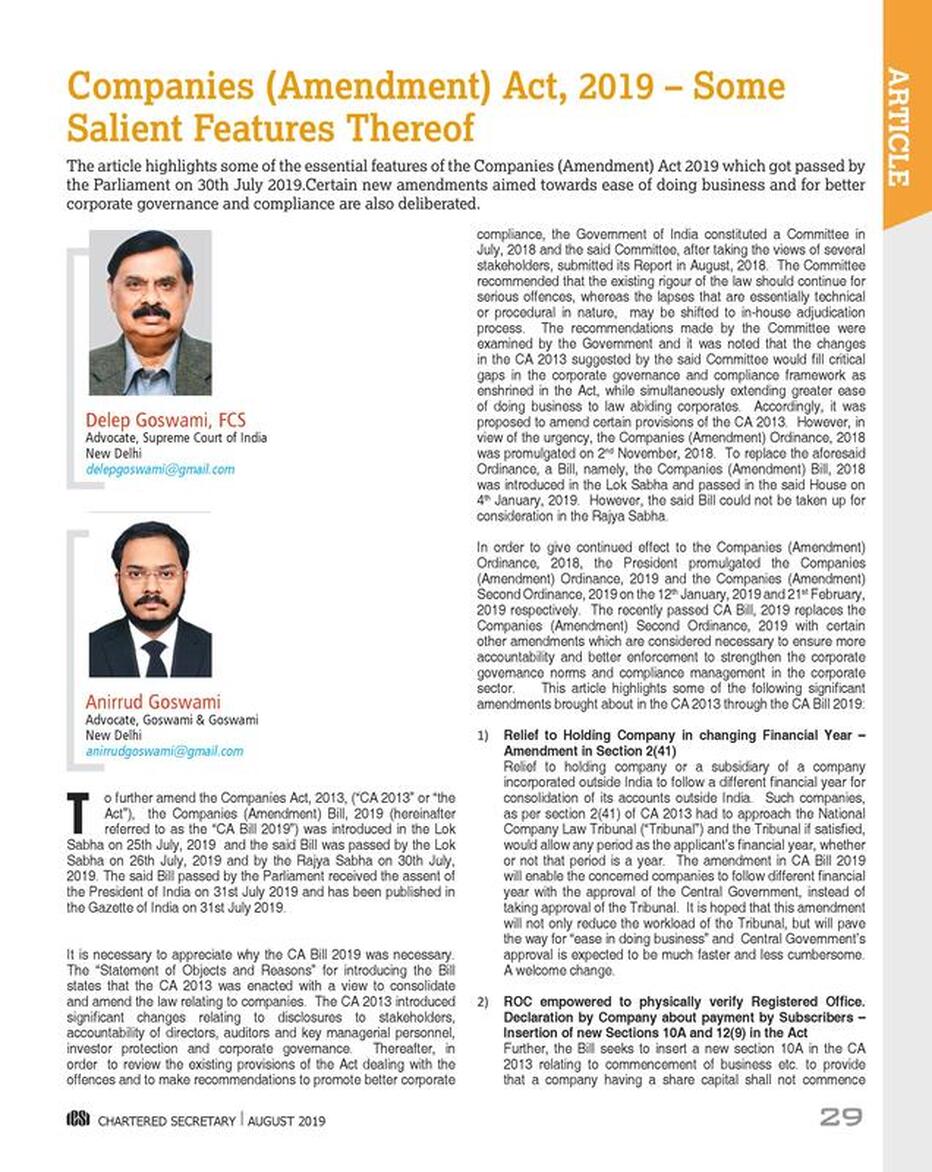
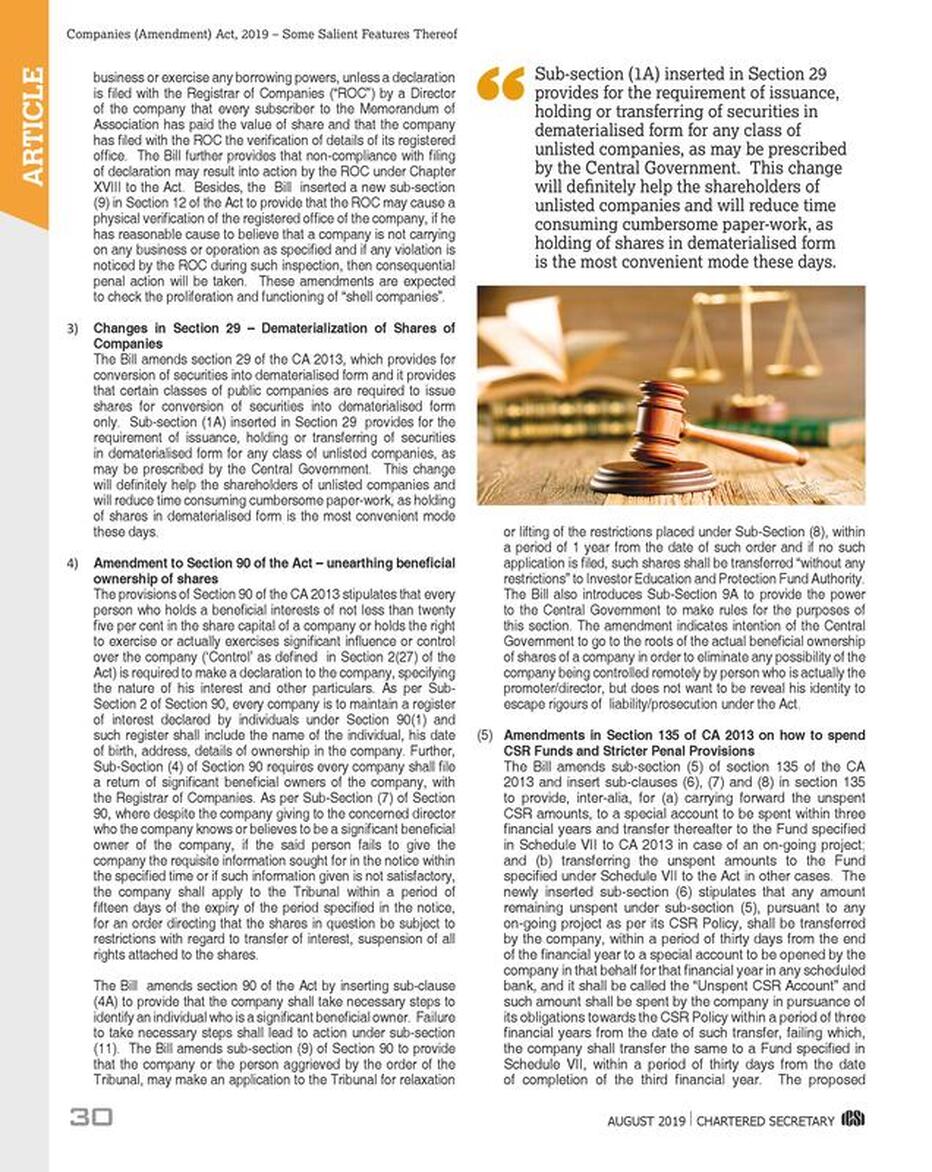
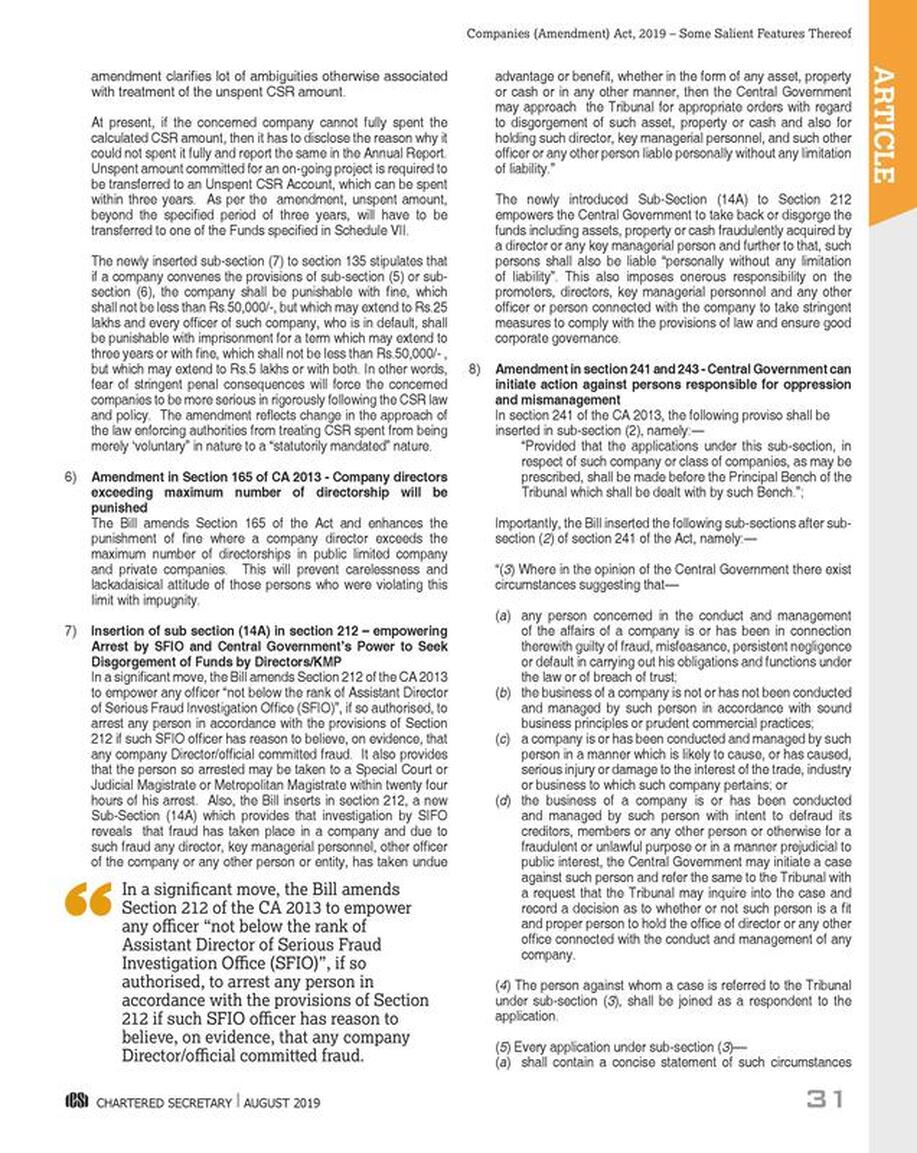
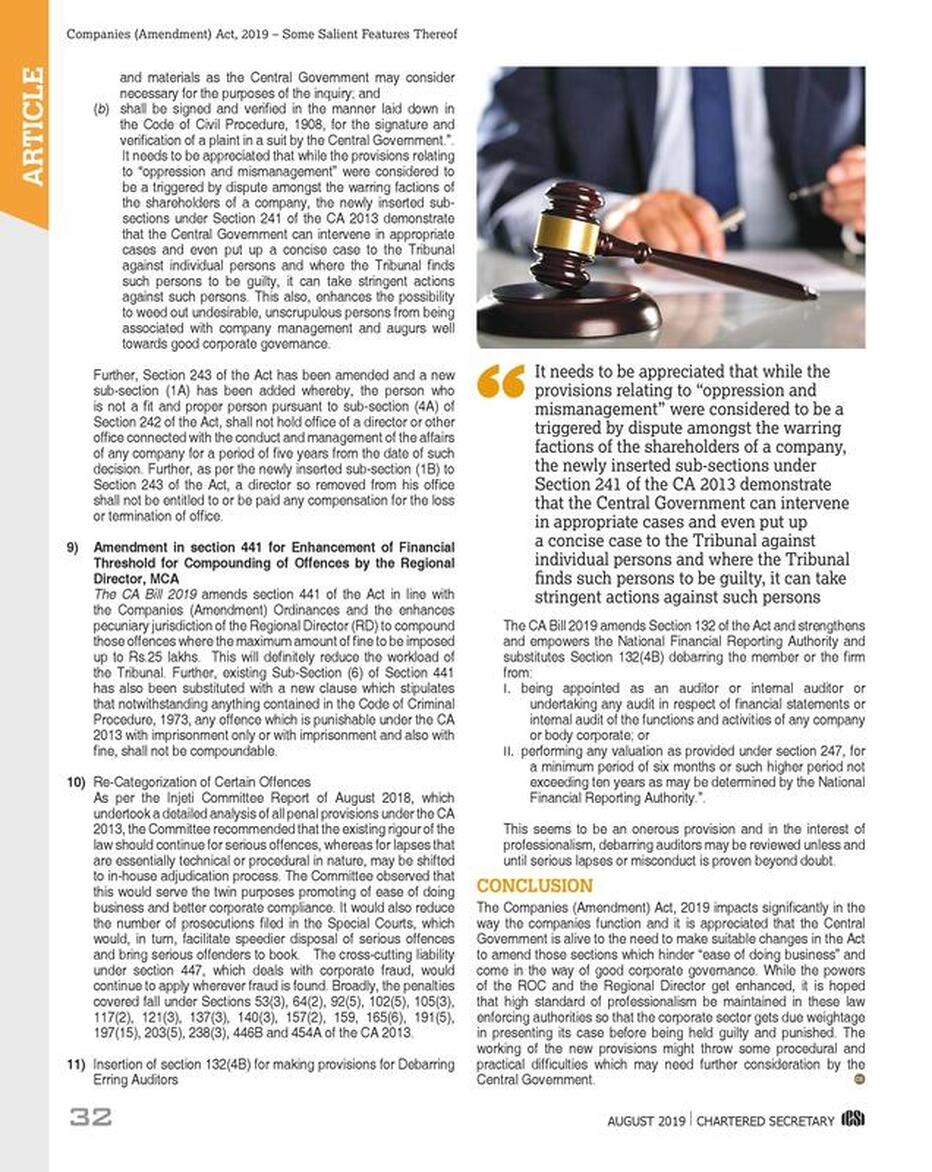

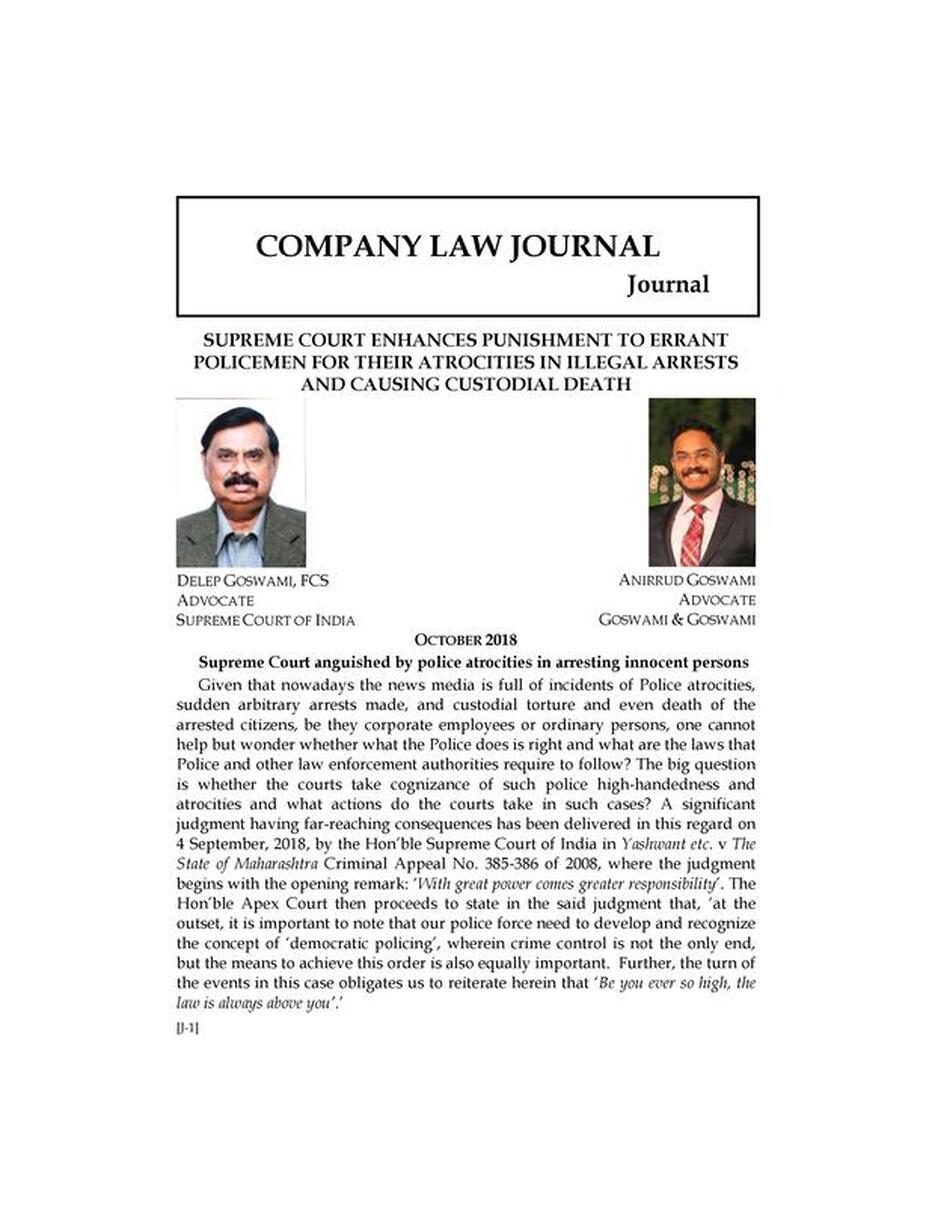
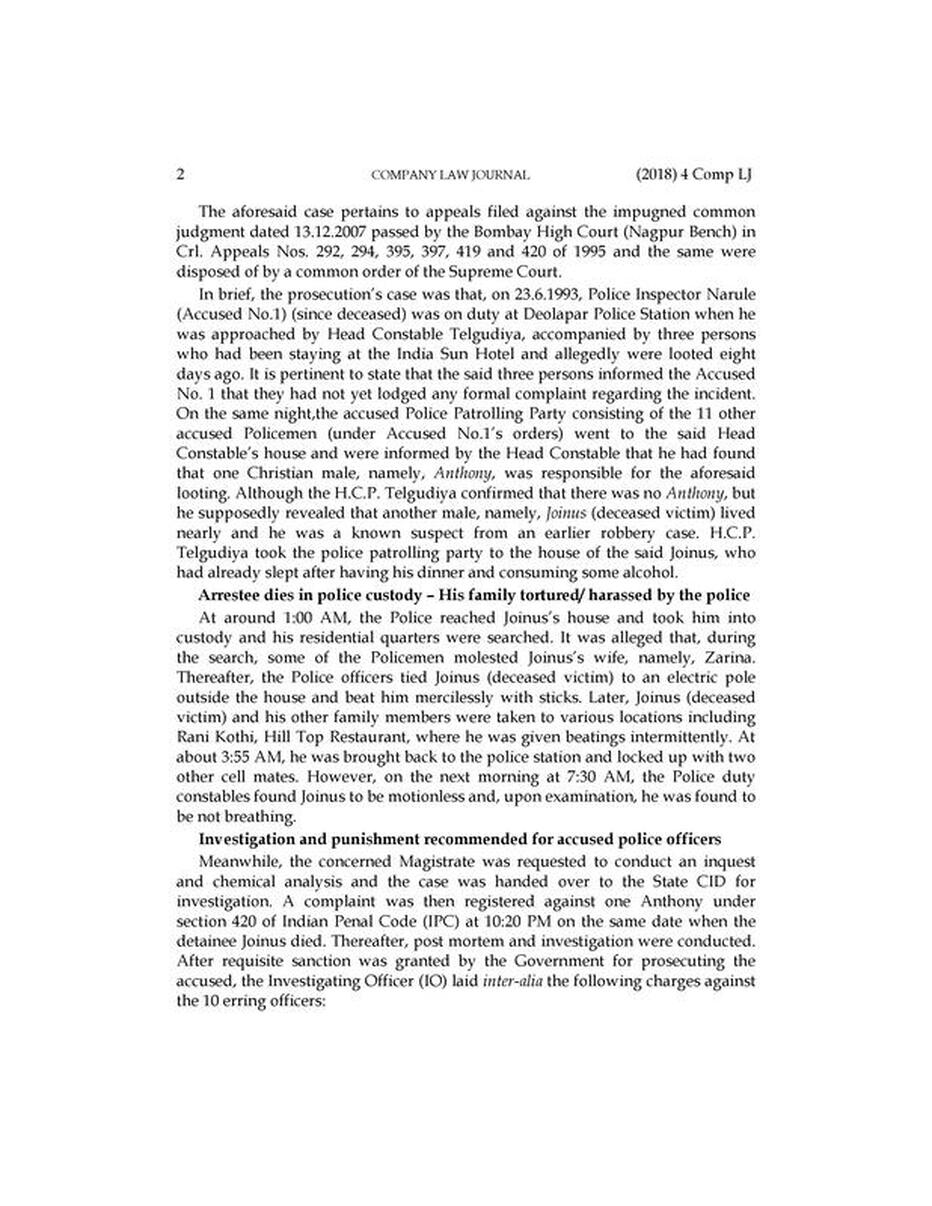
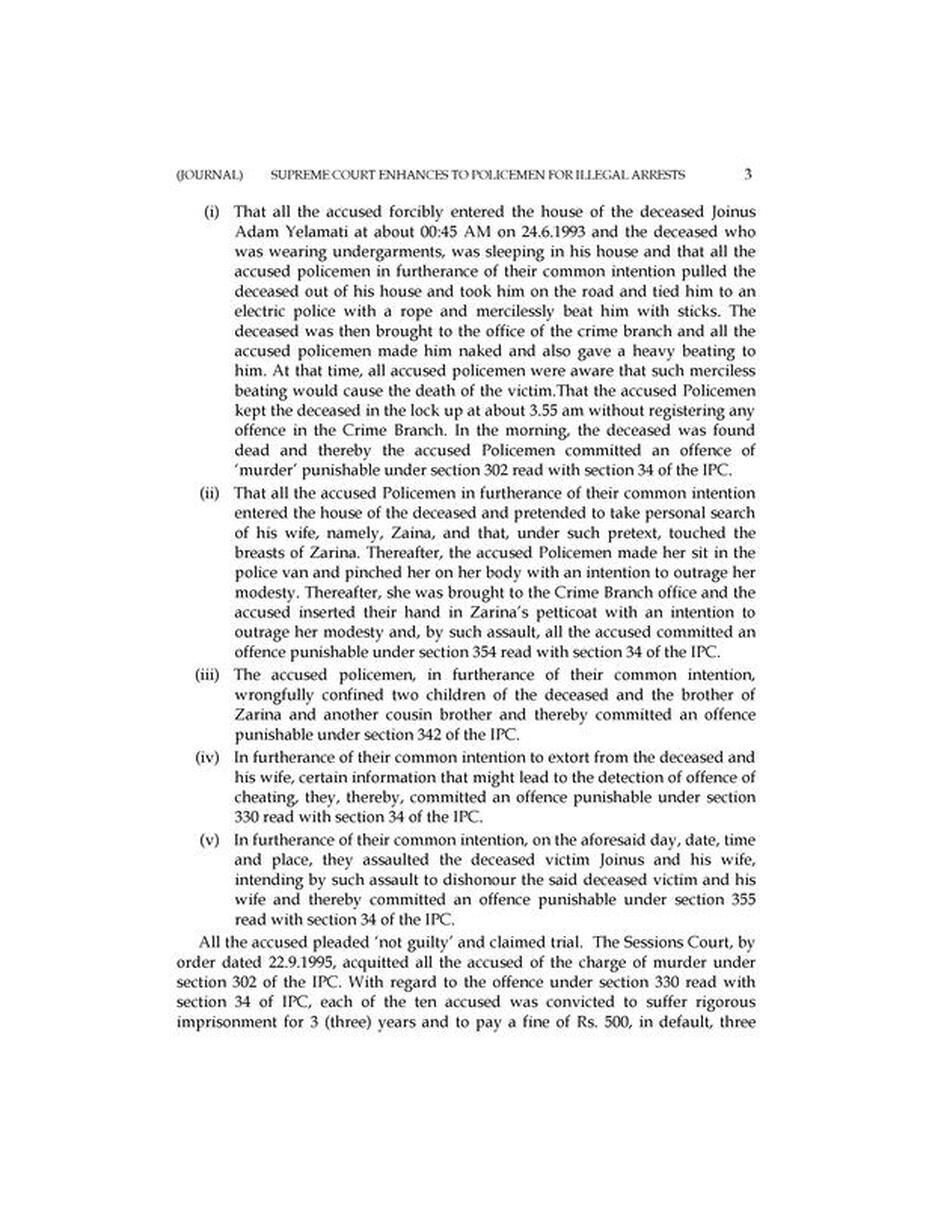
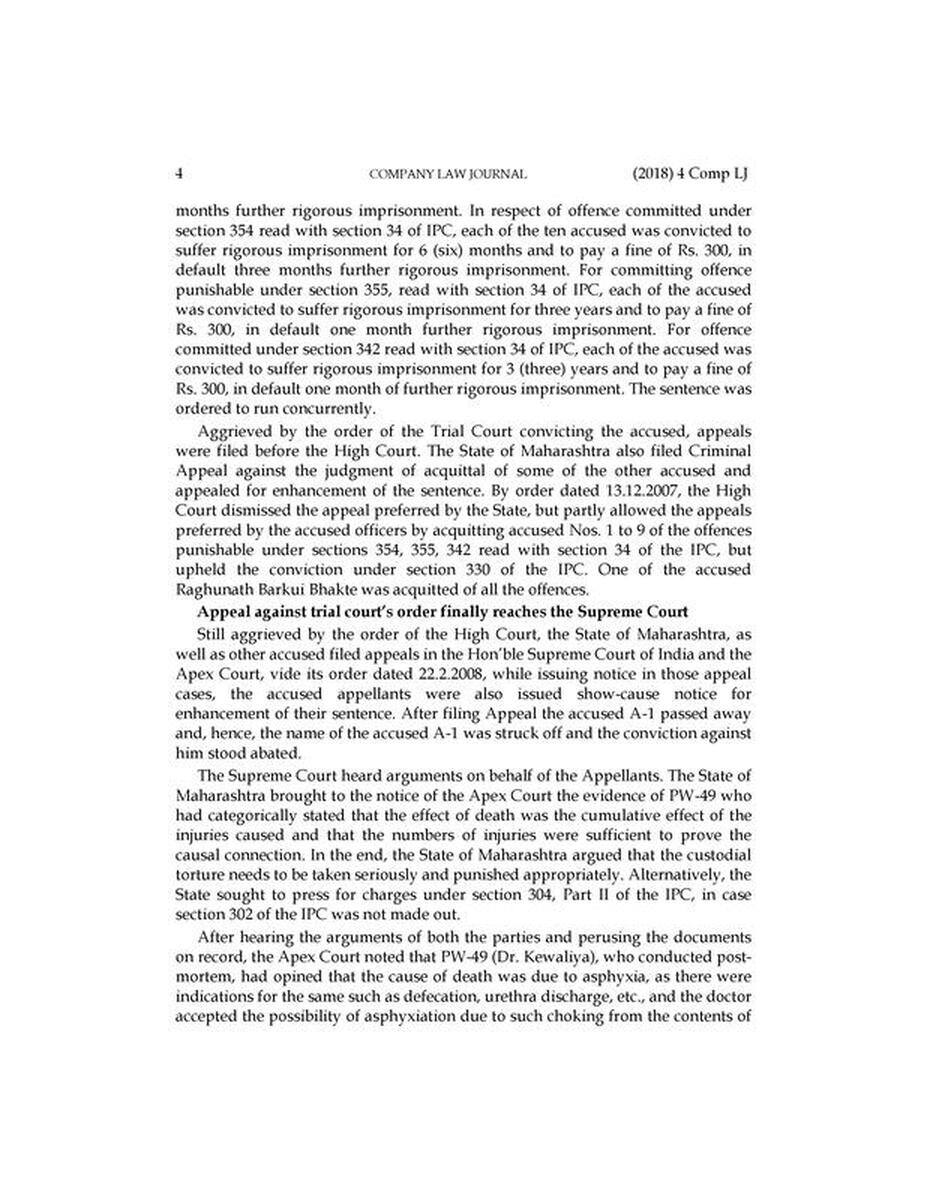
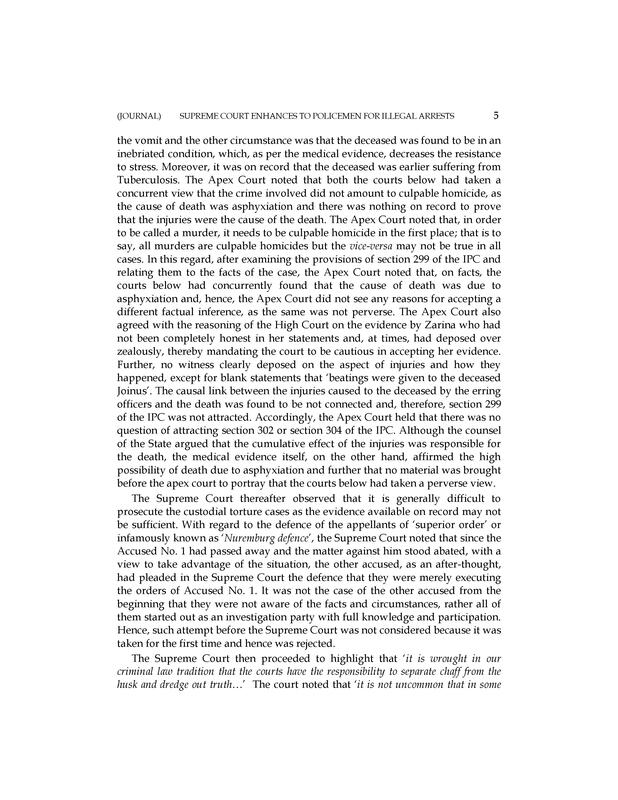

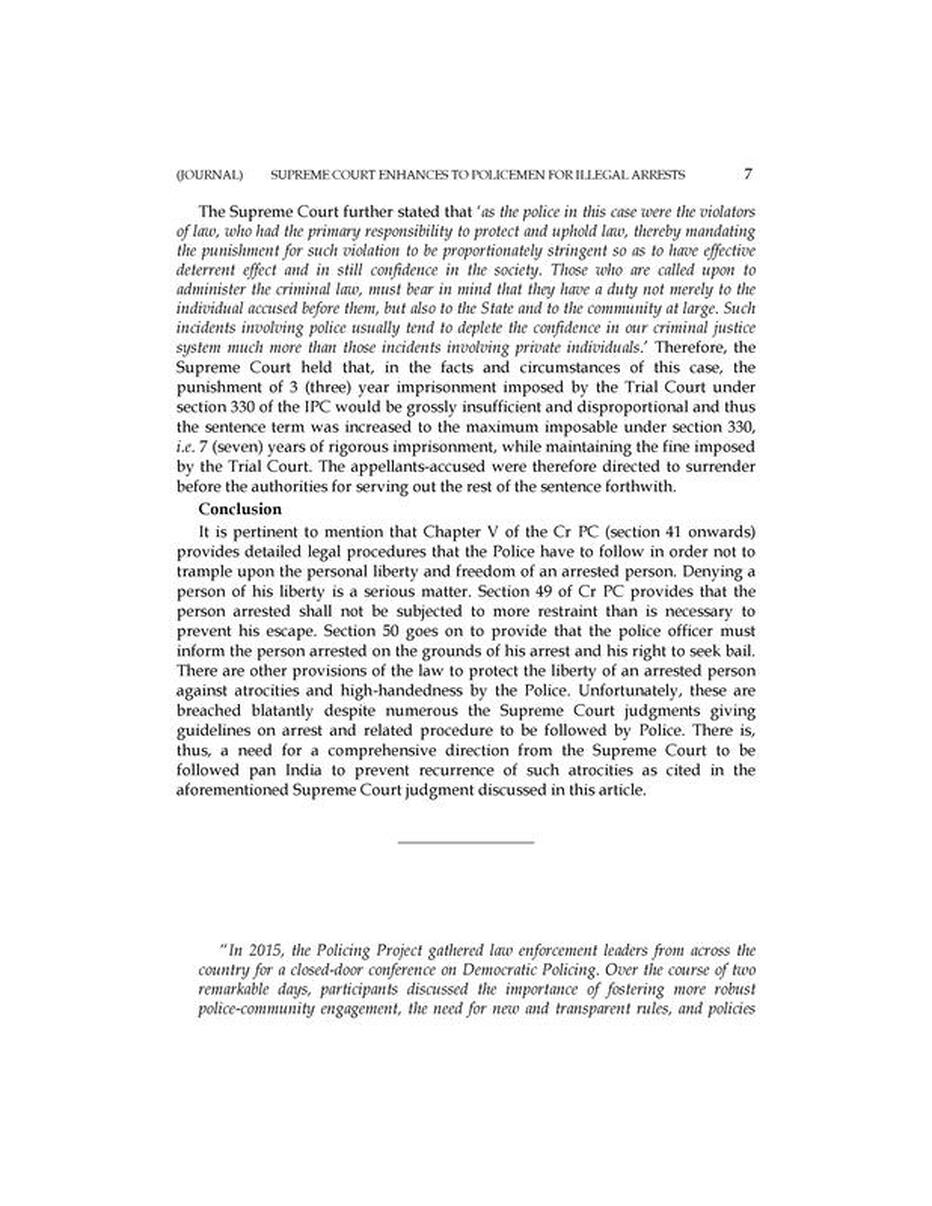
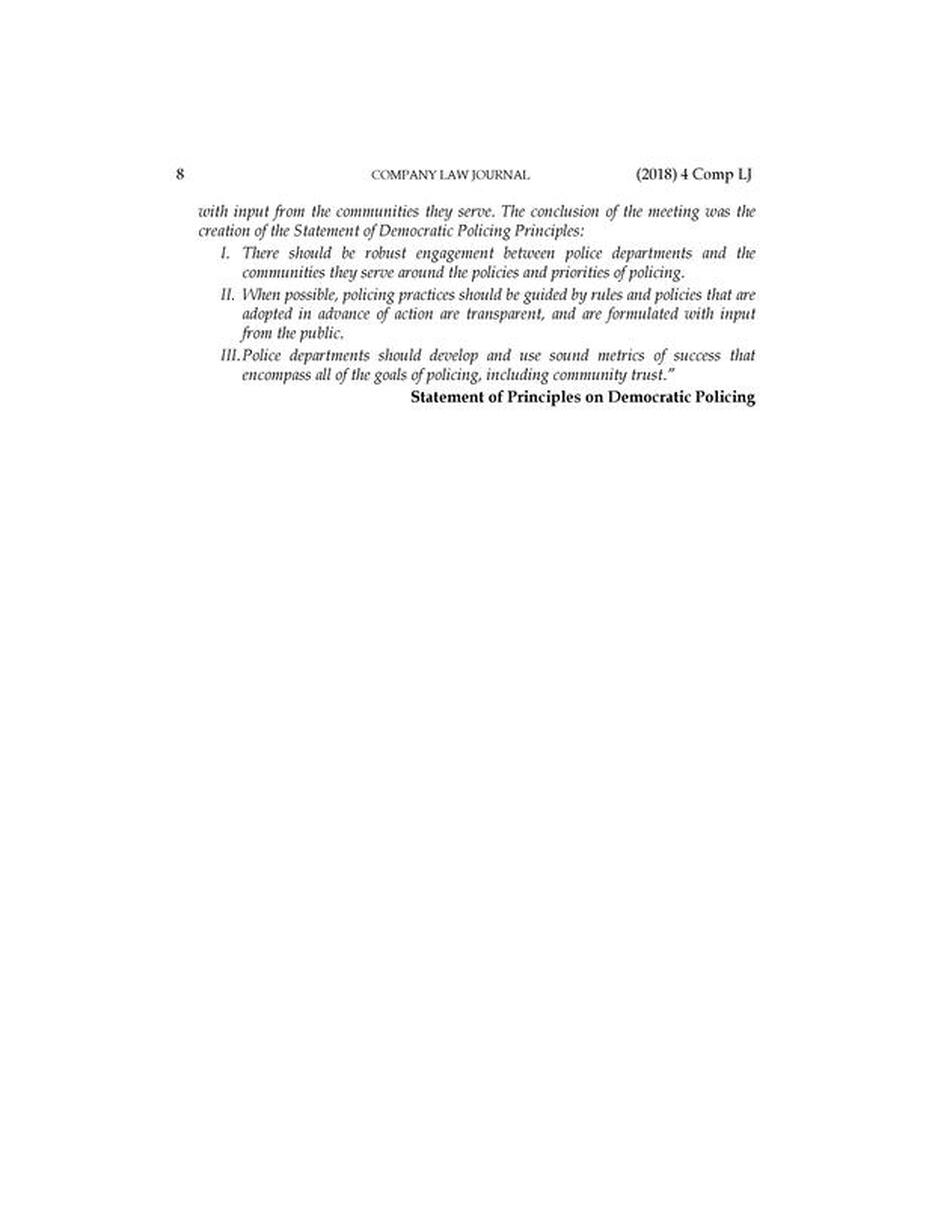
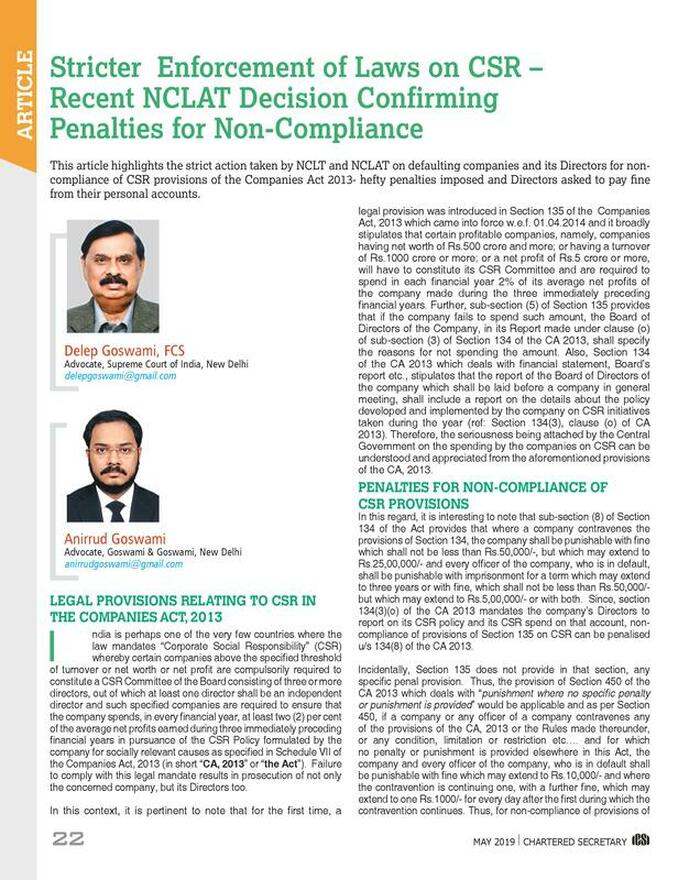
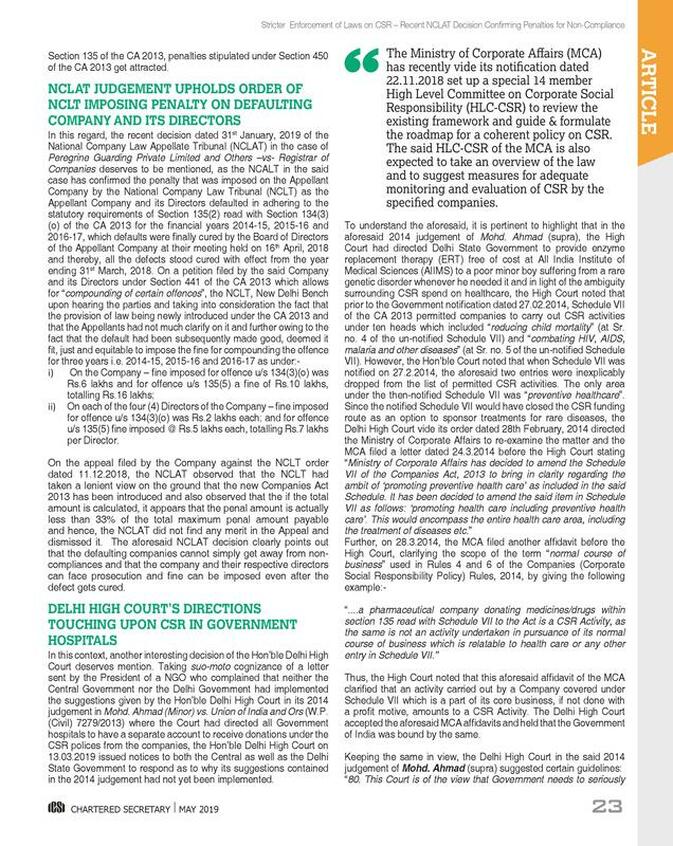
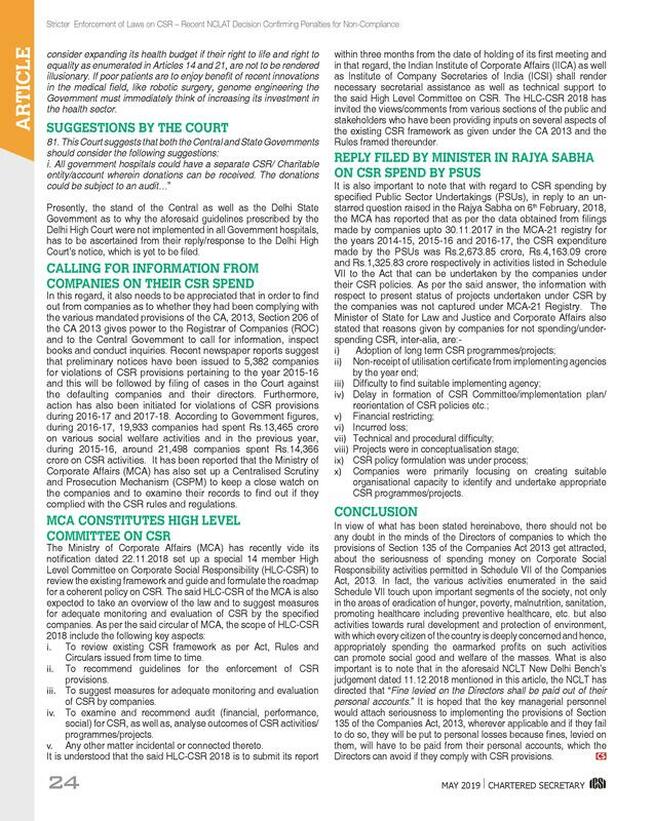
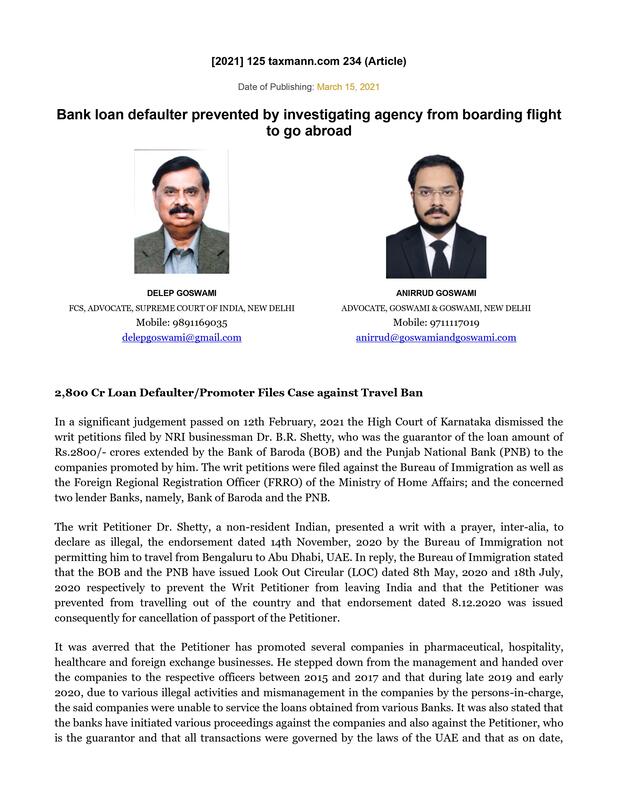
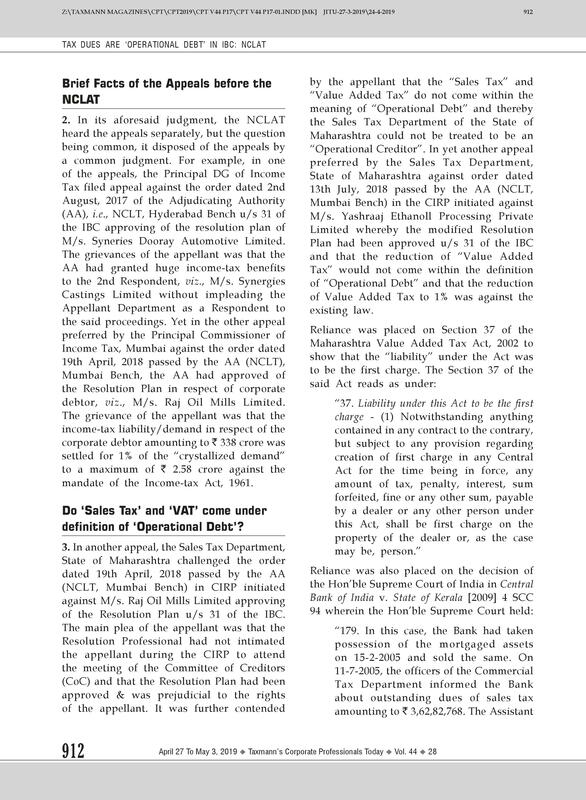
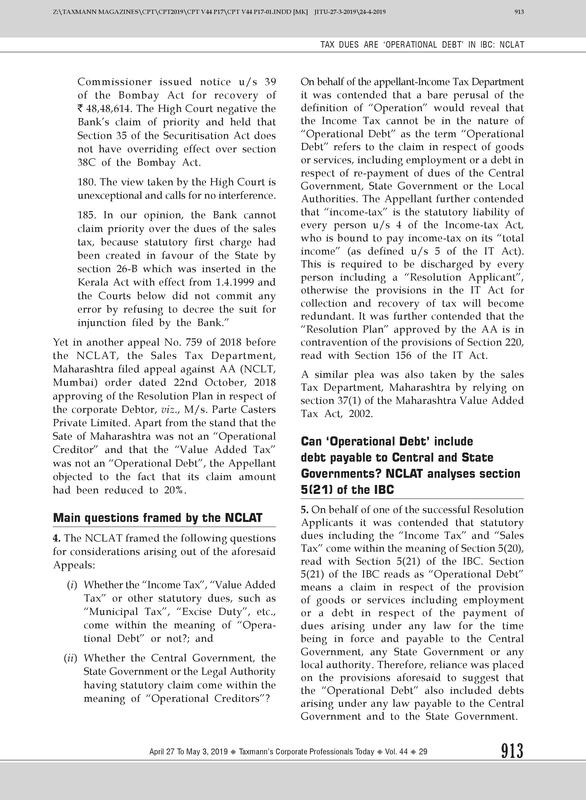
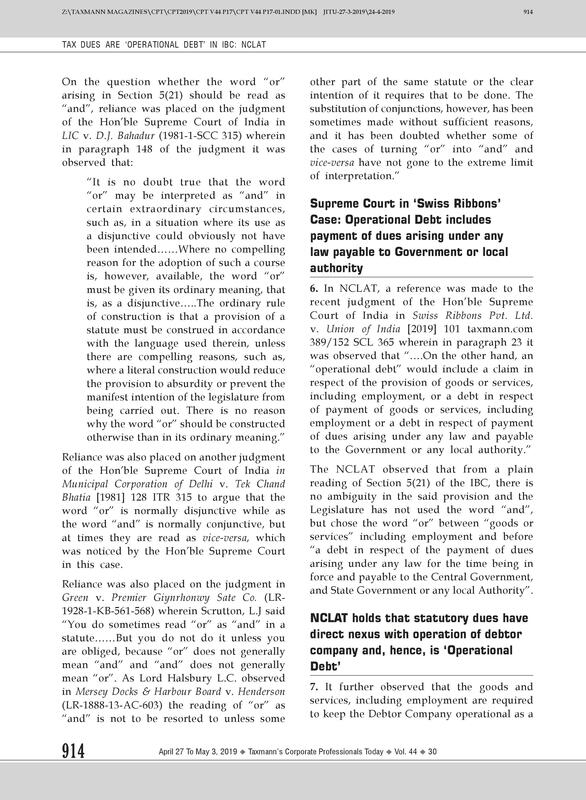
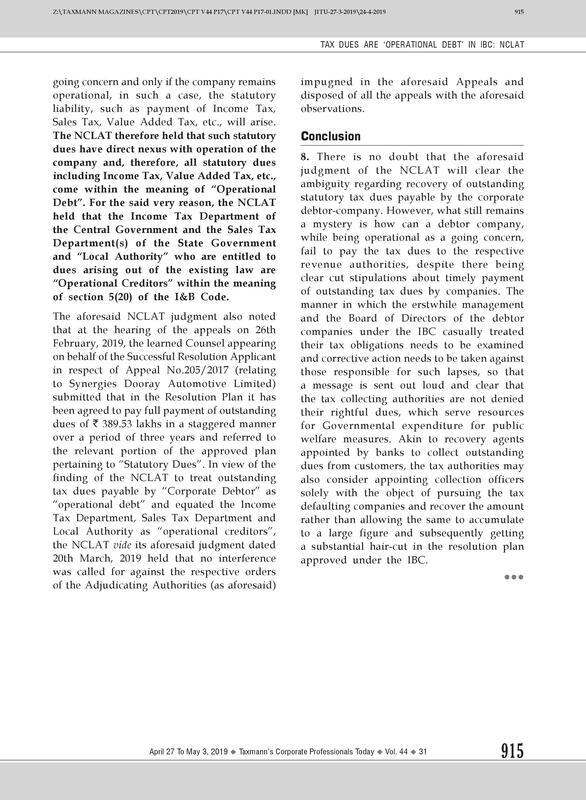
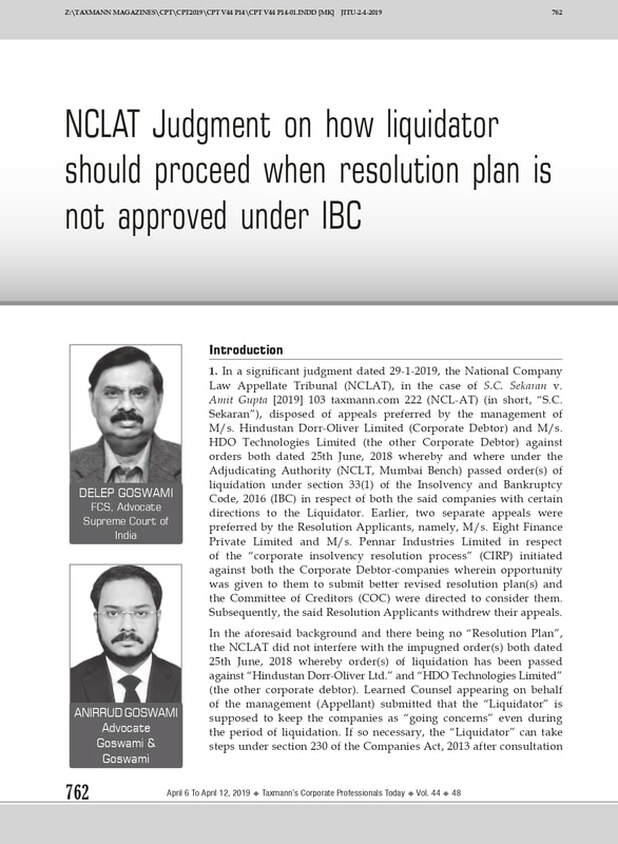
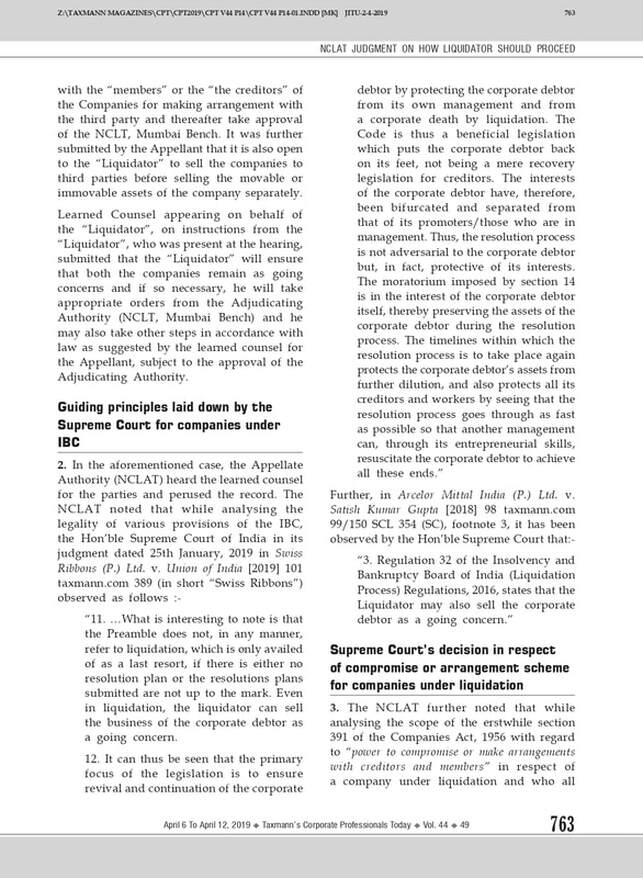
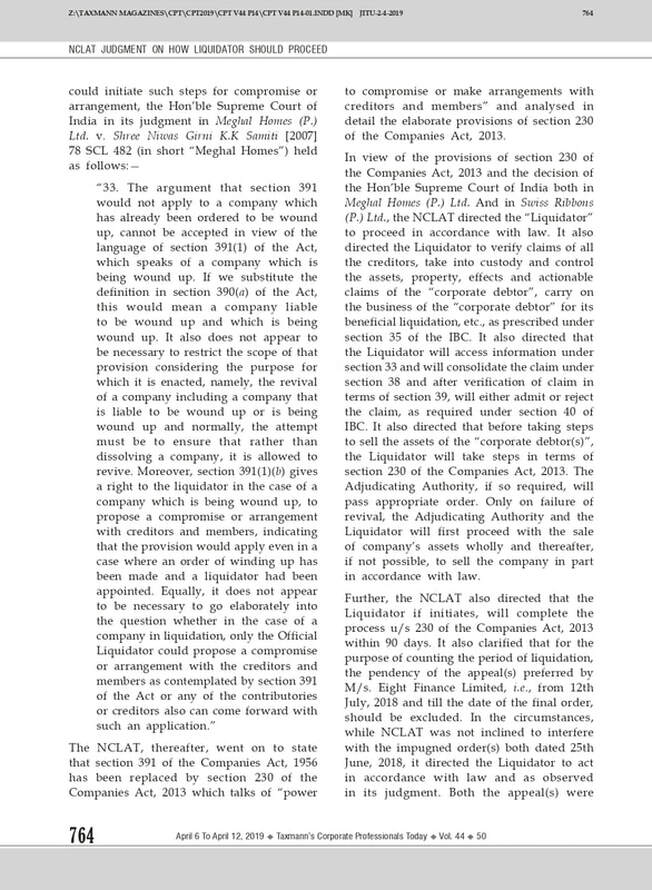
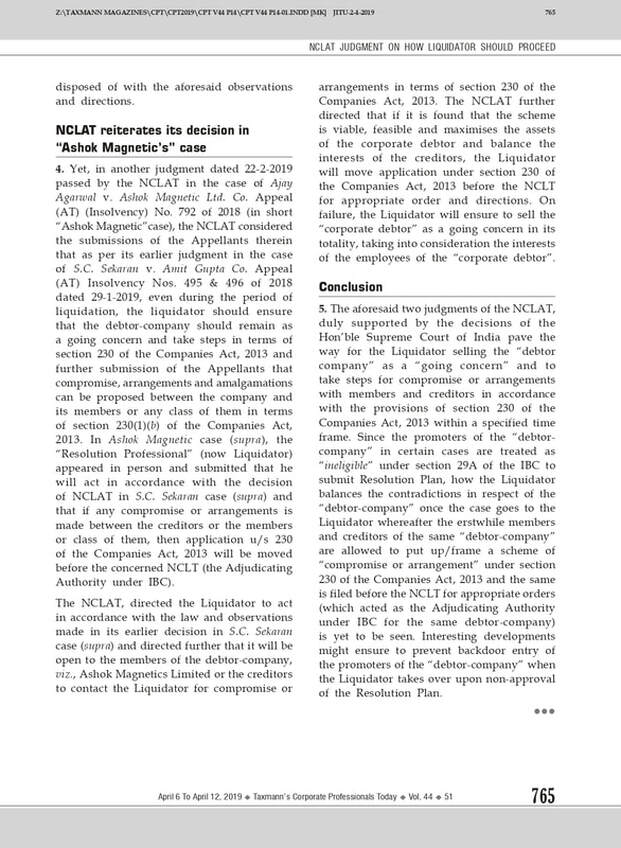
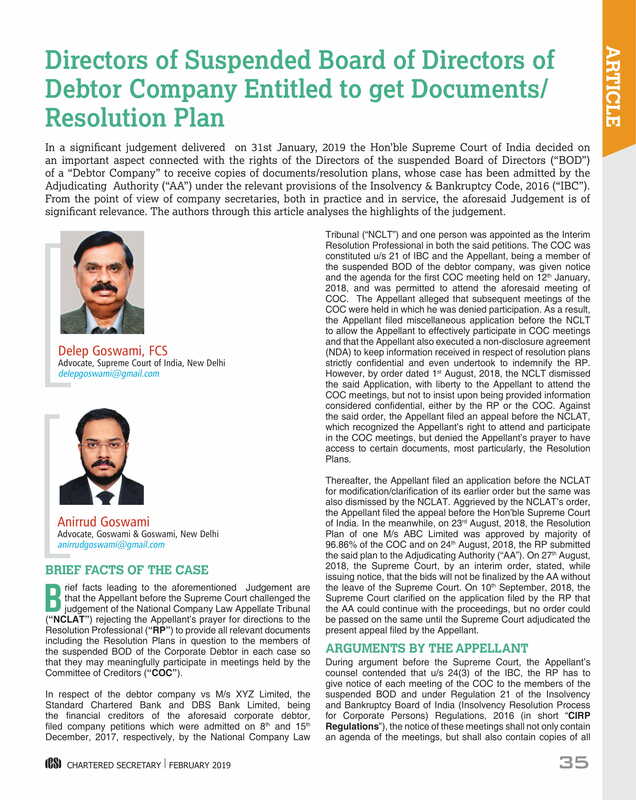
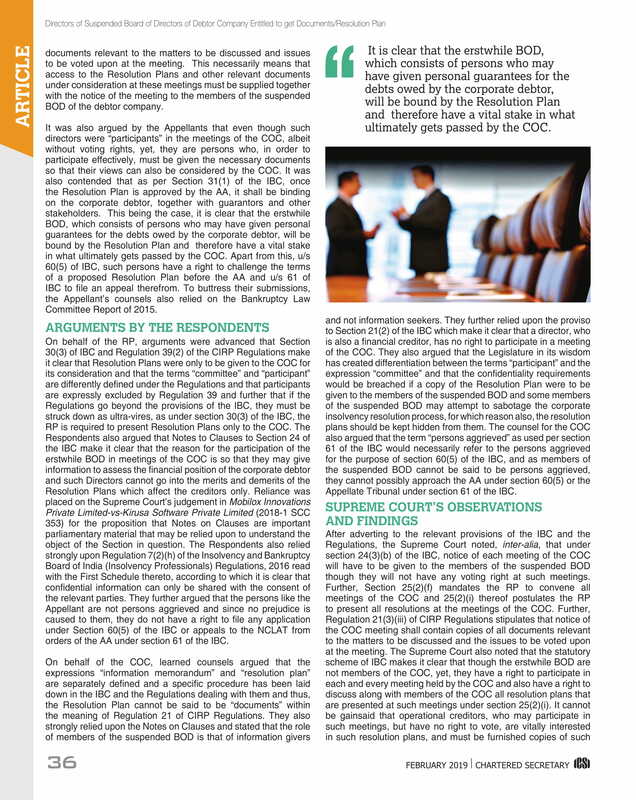
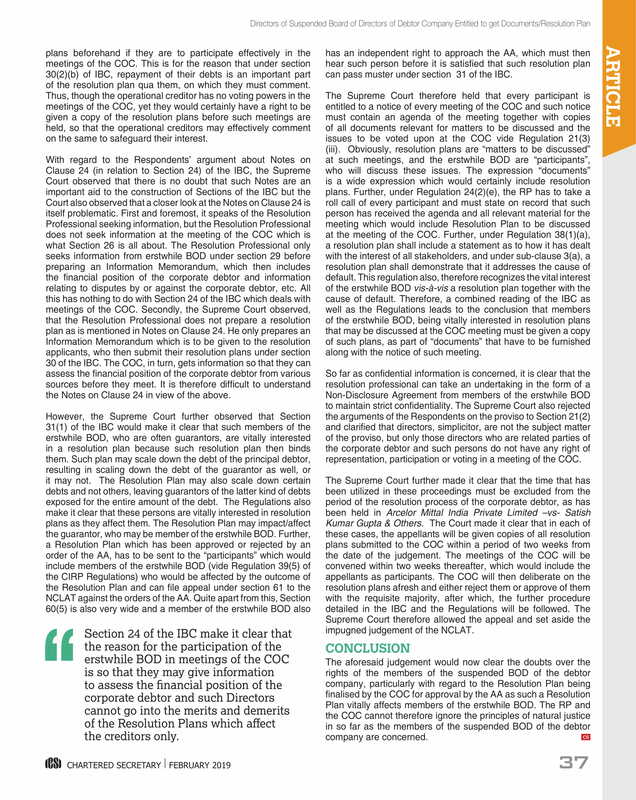
 RSS Feed
RSS Feed
